Matador Network's Blog, page 234
November 21, 2023
Experience Unparalleled Hospitality at the Finest Hotels in Abu Dhabi

Abu Dhabi, the capital of the United Arab Emirates, is a dynamic city that blends old-world tradition and contemporary elegance. And this is mirrored in the hospitality scene. Here, you’ll find hotels renowned for their opulent design, where grandeur is a given and superior service is a standard. So whether you’re seeking panoramic views of the glistening Persian Gulf, access to exclusive shopping precincts, or state-of-the-art wellness facilities, there is a wealth of options in the capital. Here are the top Abu Dhabi hotels for an unforgettable vacation.
We hope you love these Abu Dhabi hotels we recommend. Just so you know, Matador may collect a small commission from the links on this page if you decide to book a stay. Listed prices are accurate as of the time of publication.
Qasr Al SarabIn the Rub’ al Khali or Empty Quarter, the Qasr Al Sarab Desert Resort by Anantara is a secluded oasis just 90 minutes from Abu Dhabi. It’s easy to see why producers of Star Wars: The Force Awakens chose to film here as the location offers breathtaking panoramas of the Liwa Desert, making it an ideal retreat for those seeking tranquility and adventure in equal measure. The resort’s architecture is reminiscent of traditional Bedouin forts and each of the 140 rooms, 14 suites, and 53 pool villas have scenic desert views. The service here is impeccable. Other draws include the palm-line swimming pool, the Anantara Spa (with desert-themed treatments such as rose, rhassoul, and argan oil body scrubs), and the range of immersive experiences such as falcon shows, guided star gazing, and camel riding.
Qasr Al Sarab : Qasr Al Sarab Desert Resort, Al Mirayr, Abu Dhabi, United Arab Emirates
Price: $334
Book NowTelal Resort Al Ain Photo: Telal Resort Al Ain
Photo: Telal Resort Al Ain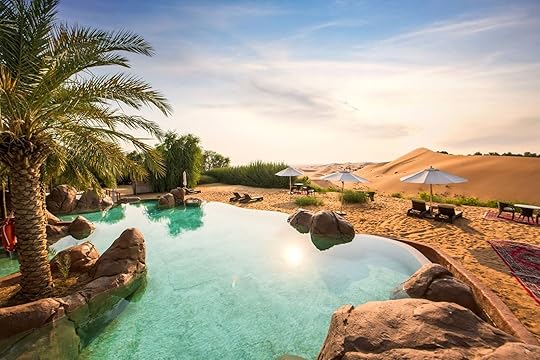 Photo: Telal Resort Al Ain
Photo: Telal Resort Al Ain Photo: Telal Resort Al Ain
Photo: Telal Resort Al AinThis splendid boutique resort is approximately a 90-minute drive from Dubai and a 60-minute drive from Abu Dhabi, making it an accessible retreat from the hustle and bustle of city life. It is also easy to reach by standard cars, so there’s no need for a SUV. The Telal Resort Al Ain is a sanctuary of opulence and a testament to the region’s rich heritage. The resort sits in the vast Remah Desert, which was once home to the nomadic Bedouin tribes and one of the best places to star gaze. From rooms with views of the stunning desert sunset to private villas with outdoor swimming pools, the resort caters to every kind of luxury traveler. Each of the 24 rooms is tastefully decorated, reflecting the region’s traditional aesthetics while providing modern comforts and amenities. There are a plethora of recreational activities for its guests. Adventure seekers can partake in outdoor activities such as desert safaris, while those who prefer a relaxing vacation can retreat to the wellness center. Additionally, the resort houses two outdoor pools (one with a waterfall), perfect for a refreshing dip under the desert sun.
Telal Resort Al Ain : Remah, Abu Dhabi, United Arab Emirates
Price: $133
Book NowThe Abu Dhabi EDITION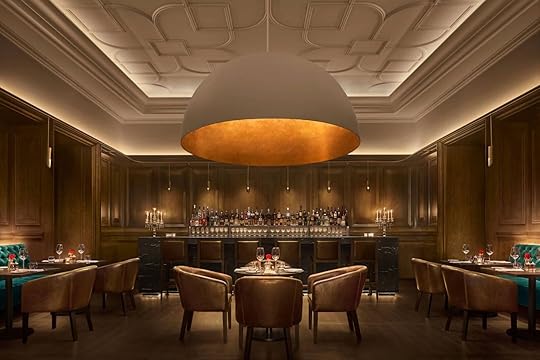 Photo: Courtesy of Marriott
Photo: Courtesy of Marriott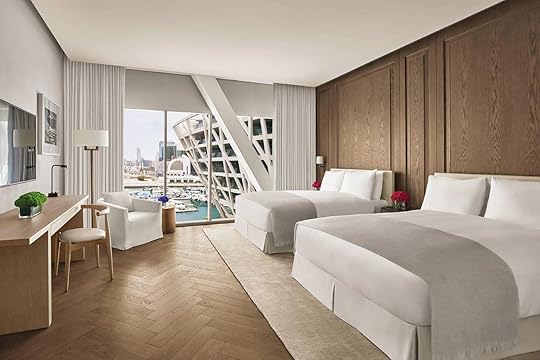 Photo: Courtesy of Marriott
Photo: Courtesy of Marriott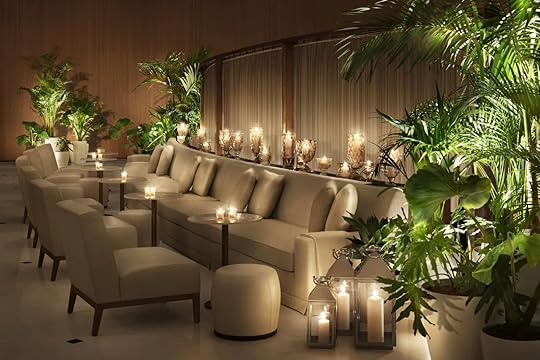 Photo: Courtesy of Marriott
Photo: Courtesy of MarriottIf you’d prefer something a little closer to the city, consider The Abu Dhabi EDITION in the heart of downtown Abu Dhabi. Overlooking the stunning Al Bateen Marina, this five-star hotel is conveniently close to local restaurants, cafes, and is just a short drive from the city center, making it an ideal choice for both leisure and business travelers. The sleek modern exterior design of the building is continued into the 198 rooms and 57 residences. Each is designed with minimalistic elegance and offers breathtaking city or marina views. Guests can enjoy a great outdoor pool with a hot tub, a state-of-the-art fitness center, and a three-level Annex entertainment venue. If you’re going all out, the two-bedroom Royal Penthouse is as luxurious as it gets and has a spectacular terrace.
The Abu Dhabi EDITION : Marina, Al Bateen, Abu Dhabi, United Arab Emirates
Price: $192
Book NowBeach RotanaThis is one of the oldest hotels in the emirate and remains one of the most popular. The central location, direct mall access, and family-friendly services bring together convenience and luxury. Just 30 minutes from Abu Dhabi International Airport and 90 minutes from Dubai International Airport, the Beach Rotana offers convenient access for international travelers. Catering to a variety of guests, the Beach Rotana has a nice range of rooms and suites. Each accommodation option is designed with attention to detail, ensuring the aforementioned blend of comfort and elegance. The hotel also houses the Beach Rotana All Suites, perfect for those traveling with a family or group requiring a more homely stay. Amenities don’t disappoint either, there’s a small private beach, a temperature-controlled pool, a full-service spa, and a free kids’ club.
Beach Rotana : 10th St, Al Zahiyah, Abu Dhabi, United Arab Emirates
Price: $144
Book NowThe St. Regis Abu Dhabi
Traveling to The United Arab Emirates? Check out Matador’s accommodations guides to Dubai and beyond: Soak in Dubai’s Epic Skyline From These Luxurious Airbnbs 9 Dubai Hotels Where You Can Soak in the City’s Opulence and Amenities Make Your Homebase at One of These Immaculate Abu Dhabi Airbnbs
 Photo: Courtesy of Marriott
Photo: Courtesy of Marriott Photo: Courtesy of Marriott
Photo: Courtesy of Marriott Photo: Courtesy of Marriott
Photo: Courtesy of MarriottThe St. Regis Abu Dhabi is famed for its private stretch of sand and beach club with lap pool and Treasure Island kids’ club. The five-star sits on the Corniche Road and is within walking distance from Emirates Palace and the Founding Father Memorial. Guests can choose from a wide range of rooms and suites, with prices varying depending on the room type and season. It’s recommended to check the hotel’s official website for seasonal deals. If this is out of your budget, you can visit The Nation Riviera Beach Club and spend the day enjoying the facilities.
The St. Regis Abu Dhabi : Nation Tower, Corniche Corniche Abu Dhabi, United Arab Emirates
Price: $186
Book NowEmirates Palace Mandarin OrientalSituated on the shores of the Arabian Gulf, the Emirates Palace Mandarin Oriental is a luxury five-star hotel that is arguably one of the best examples of the exceptional hospitality in Abu Dhabi. It is also renowned for its breathtaking sea and city views. The airport is only a short 40-minute drive from the hotel, and if coming from Dubai, it’s only 90 minutes away. The suites here are some of the finest in the Emirates, and all come with outdoor terraces or balconies and a 24-hour butler service. There is a huge array of facilities including a private marina, an excellent kids’ club, and a Michelin-starred Italian restaurant.
Emirates Palace Mandarin Oriental : West Corniche Road, Al Ras Al Akhdar, Abu Dhabi, United Arab Emirates
Price: $426
Book NowConrad Abu Dhabi Etihad Towers Photo: Courtesy of Hilton
Photo: Courtesy of Hilton Photo: Courtesy of Hilton
Photo: Courtesy of Hilton Photo: Courtesy of Hilton
Photo: Courtesy of HiltonThis stunning hotel is in the exclusive beachside district of Ras Al Akhdar, mere steps away from the celebrated landmarks of Emirates Palace and the Corniche. There is nothing subtle about the design of the hotel. Its 69-storey towers, Swarovski-crystal chandeliers, floor-to-ceiling glass, and amethyst-encrusted elevators pack a punch. Amenities at the Conrad are nothing short of top-tier. The hotel is home to 12 dining outlets and bars, three outdoor pools (including a swim-up bar), a private beach, and an observation deck offering the best views over the city.
Conrad Abu Dhabi Etihad Towers : Corniche Rd, Al Bateen, Abu Dhabi, United Arab Emirates
Price: $143
Book NowThe top things to do in Abu DhabiSheikh Zayed Grand Mosque: This architectural masterpiece is one of the world’s largest mosques with a capacity for over 40,000 worshippers. It features 82 domes, more than 1,000 columns, 24-carat gold gilded chandeliers, and the world’s largest hand-knotted carpet.Abu Dhabi Corniche: The Corniche Road spreads across an impressive five miles of manicured waterfront that includes children’s play areas, separate cycle and pedestrian pathways, cafés and restaurants, and the Corniche Beach.Yas Mall: Located in the heart of Yas Island, Yas Mall is the UAE’s second-largest shopping centre. It offers an incredible shopping, dining and entertainment experience for residents and tourists alike.Observation Deck at 300: Offering the highest vantage point of Abu Dhabi, this observation deck provides stunning cityscape views.Etihad Towers: This is a complex of buildings with five towers in Abu Dhabi, the tallest of which is Tower 2, a 305 meter-tall skyscraper.Yas Waterworld: This is a water park located on Yas Island in Abu Dhabi. It features a range of thrilling rides, slides, and attractions.How many days in Abu Dhabi is enough?The number of days needed to explore Abu Dhabi depends on your interests and pace. However, for most travelers, a three to four day trip is usually sufficient to cover the main attractions. This includes a visit to the Sheikh Zayed Grand Mosque, the Etihad Towers, Yas Island, and the Emirates Palace.
What is the best part of Abu Dhabi to stay?Yas Island: The area is considered the best for families due to the endless entertainment opportunities available here.The Corniche: The Corniche offers the best of both worlds, a beach and the city’s urban side. It is also home to the St. Regis.Downtown near the beach: This is where the main tourist neighborhood is based.Khaldiyah Park: An outstanding location to enjoy with the family, with beautiful gardens for a picnic or a barbecue. More like thisTravelMake Your Homebase at One of These Immaculate Abu Dhabi Airbnbs
More like thisTravelMake Your Homebase at One of These Immaculate Abu Dhabi Airbnbs
November 20, 2023
Where To Play, Eat, and Stay in St. Petersburg, Florida

With an average of 361 days of sunshine annually and home to some of America’s best beaches, St. Petersburg is one of Florida’s fastest growing cities. Located on a peninsula between Tampa Bay and the Gulf of Mexico, St. Petersburg is ideally situated for beachgoers, watersports, and outdoor activities. While the soft sand beaches of nearby Clearwater and St. Pete Beach are an easy drive, downtown St. Petersburg has its own attractions worth exploring.
The city’s vibrant arts scene is reason enough to visit, with the world-class Dalí Museum attracting visitors from around the globe. Downtown St. Petersburg, or St. Pete as the locals call it, has an eclectic mix of historic and modern accommodations anchored by the historic Vinoy Resort. St. Pete also has a thriving food and drink scene with award-winning restaurants, distilleries, and brewpubs. From the cool bars and boutiques of Central Avenue to the family-friendly attractions of the St. Pete pier, the “Sunshine City” offers an incredible mix of activities waiting to be discovered.
Things to do in St. PetersburgDalí Museum
Photo: travelview/Shutterstocl
If there’s one must-do while visiting St. Petersburg, it’s the Dalí Museum. Open since 1982, the museum is home to more Dalí masterpieces than any other museum in the world. View over 2,400 works in every medium, including famous works such as The Disintegration of the Persistence of Memory and The Discovery of America by Christopher Columbus. Located directly on the downtown waterfront, the museum has a surrealism-inspired design and includes a café, shop, and entertainment space that regularly hosts events, including Sunday jazz brunch. A visit to the museum should include a ticket to Dali Alive 360º, a multi-sensory art experience of light and sound held in the new Dalí Dome.
Dalí Museum: One Dalí Blvd, St. Petersburg 33701
Fairgrounds St. PeteView this post on InstagramA post shared by Fairgrounds St Pete (@fairgroundsstpete)
In the heart of the Warehouse Arts District, Fairgrounds St. Pete is a 15,000-square-foot immersive art destination featuring commissioned works and installations from some of Florida’s best-known artists. The exhibits feature technology displays, play spaces, and interactive games that follow a joyful art narrative celebrating “weird, wacky, and wonderful Florida.” The Instagram-worthy displays feature fun, cutting-edge lighting and soundscapes designed to engage visitors of all ages.
Fairgrounds St. Pete: 2606 Fairfield Ave. S, St. Petersburg 33712
Edge DistrictView this post on InstagramA post shared by EDGE District (@edgedistrict)
Located on Central Avenue between ninth and sixteenth street, the Edge District is home to dozens of restaurants, bars, and unusual boutiques. Spend an afternoon at The Candle Pour, a candle making experience that uses more than 100 different fragrance oils. Grab a handcrafted cold brew from Intermezzo, a European-style coffee and cocktail bar, or check out the bohemian clothing and gifts at Saltwash Boutique. Don’t miss the more than a dozen original artist murals painted on buildings and structures throughout the Edge.
St. Pete Pier
Photo: Sunshower Shots/Shutterstocl
A visit to St. Petersburg must include a stroll along the beautifully designed St. Pete Pier, a waterfront destination that includes green spaces, attractions, restaurants, and activities. Open daily from 30 minutes before sunrise to 11 PM, St. Pete Pier offers spectacular waterfront views across its 26 acres. The pier has a variety of family-friendly green spaces, fishing spots, a splash pad, and a pavilion that frequently hosts seasonal concerts and festivals. On weekends, you’ll find an open-air market of independent vendors selling artwork. The Tampa Bay Watch Discovery center is an interactive attraction that offers hands-on exhibits and demonstrations about the area’s ecosystem. Doc Ford’s Rum Bar and Grille is a casual spot along the pier to grab a bite, while the imposing Pier Point building houses three dining experiences across three levels, all with incredible views of the city and Tampa Bay.
St. Pete Pier: 800 2nd Ave NE, St. Petersburg 33701
St. Pete Beach
Photo: Artiom Photo/Shutterstocl
Consistently voted one of the best beaches in America, St. Pete’s Beach is a stretch of soft white sand nestled along Long Key. Visit the shops on Corey Avenue, enjoy drinks or a meal at the historic Don CeSar Resort, or simply dip your toes in the warm waters of the Gulf of Mexico. Located just 20 minutes from downtown St. Petersburg, St. Pete Beach has playgrounds, grill facilities, and showers, making it an easy day trip from the city.
St. Pete Beach Public Beach Access: 4700 Gulf Blvd, St. Pete Beach 33706
Where to eat and drink in St. PetersburgCellarmasters Wine Bar and ShopView this post on InstagramA post shared by CellarMasters (@cellarmasters_of_the_universe)
Tucked inside a nondescript former garage in a developing part of the Edge District, Cellarmasters is equal parts retail shop and wine bar. Chalkboard signs welcome guests with a cheeky warning that you won’t find your average mass market wines inside, that sleeves are optional, and that the only beer available is “crappy but cold,” signaling to visitors that this is a wine bar that doesn’t take itself too seriously. With an interior decorated in velvet paintings, taxidermy, and ‘70s furnishings, the vibe is retro cool. Though the atmosphere is laid-back, the extensive wine selection by the glass, including biodynamic and small-production wines from around the world, is curated by serious wine connoisseurs.
Cellarmasters: 1005 1st Avenue North, St. Petersburg 33705
AlleloView this post on InstagramA post shared by Savor St. Pete (@savorst.pete)
Allelo has only been open for a year in St. Petersburg, but it has quickly established itself as one of the best restaurants in the city. With the motto of “small plates, good times, and lots of wine,” the restaurant serves inventive craft cocktails (try Like a Virgin) and an extensive menu of Mediterranean-inspired seafood, small plates, and flatbreads. The steak tartare, prepared tableside and served with warm Moroccan khobz bread, and the mezze platter are perfect for sharing, while the Greek salad is a spin on the classic, with finely chopped cucumber, tomato, and herbs served over baked feta cheese. The half chicken served with a peri peri sauce and the lamb bolognese are also standouts, while the crispy cauliflower over garlic puree should not be missed.
Allelo: 300 Beach Drive NE #128, St. Petersburg 33701
No VacancyView this post on InstagramA post shared by No Vacancy (@novacancystpete)
If you’re in the mood for drinks with a side of humor, head to No Vacancy, a flamingo-themed bar and event space that is modeled after a retro-style motel. The outdoor bar-patio space features neon-colored loungers, umbrellas, and lifeguard chairs that scream vintage Florida fun, while the indoor bar continues the not-so-subtle theme with gator and flamingo artwork. Cocktails are served in whimsical fish-shaped glasses with paper umbrellas and plastic flamingos. Try the Tropic Like Its Hot cocktail — a mix of tequila, yellow chartreuse, lime, cucumber, and jalapeno — or, if you’re extra thirsty, order one of the jumbo punch bowl cocktails that serve up to four people.
No Vacancy: 937 Central Avenue, St. Petersburg 33705
The Urban StillhouseView this post on InstagramA post shared by The Urban Stillhouse (@urbanstillhousestpete)
A town with such vibrant nightlife will inevitably have some strong contenders for brunch to ease the Sunday morning aftereffects. The Urban Stillhouse, a distillery and restaurant by Horse Soldier Bourbon, is a soaring space of dark wood, leather, and exposed brick with multiple bars and tasting rooms. Start out with the house Old Fashioned, made with Horse Soldier bourbon and maple syrup. The menu has elevated brunch mainstays such as waffles with lemon mascarpone and eggs benedict served over fried green tomatoes and porchetta topped with chive hollandaise.
The Urban Stillhouse: 2232 5th Avenue S, St. Petersburg 33712
Green Bench Brewing CompanyView this post on InstagramA post shared by Mezzo Market | St Pete, FL Market Supporting Small Businesses (@mezzomarket)
Open since 2013, Green Bench Brewing Company was St. Petersburg’s first craft brewery. More than a decade later, it still offers the tastiest craft beers in town. Named after St. Petersburg’s iconic green benches that dotted the city in the early 1900s, Green Bench Brewery serves more than 14 beers and ciders on tap, all brewed on site. With a vast outdoor space, live music, and an upbeat yet casual vibe, there’s no better spot to cool off with a cold one in the happening Edge District.
Green Bench Brewing Company: 1133 Baum Ave. N, St. Petersburg 33705
VerandaView this post on InstagramA post shared by The Vinoy Resort & Golf Club (@vinoyresort)
Located on the front porch of The Vinoy resort, Veranda is an elegant option for cocktails and light bites while taking in the Tampa Bay views. With ample bar and lounge seating, Veranda offers a civilized respite for pre-dinner drinks while nibbling on cheese, charcuterie, or an order of truffle fries. Try The Autograph, the signature house drink made from Casamigos tequila, St. Germain, elderflower liqueur, and rosewater syrup.
Veranda: 501 5th Avenue, NE, St. Petersburg 33701
Where to stay in St. PetersburgThe Vinoy Resort and Golf Club
Photo: Expedia
We hope you love The Vinoy! Just so you know, Matador may collect a small commission from the links on this page if you decide to book a stay. Listed prices are accurate as of the time of publication.
Located directly on Tampa Bay harbor in downtown St. Petersburg, The Vinoy Resort and Golf Club has been the premier hotel in the city since 1926. Listed on the National Register of Historic Places, the resort has recently undergone the first phase of a multi-million-dollar refurbishment to its old Florida glamor in the Mediterranean Revival style. The hotel’s signature pink façade, original wood beams, and tile in the lobby’s grand space continue the sense of grandeur, while the modernized guest rooms and dining spaces speak to its new chapter in hospitality.
A member of Marriott’s Autograph Collection portfolio, The Vinoy spared no expense in the guest room renovations. The thoughtful redesign includes Art Deco-style furnishings, built-in Nespresso bars, and an airy color palette that mimics the harbor views. Bathrooms are outfitted in floor-to-ceiling Carrera marble, walk-in showers, and Oritigia Sicilia amenities. Dining options at the resort include the gorgeous French patisserie, Lottie, as well as Parasol, the poolside restaurant serving Latin-inspired cuisine along with panoramic Tampa Bay harbor views.
The Vinoy Resort and Golf Club: 501 5th Ave NE, St. Petersburg 33701
How to get to and around St. Petersburg
Photo: Peter Titmuss/Shutterstock
Nine miles north of St. Petersburg, the St. Pete-Clearwater International Airport (PIE) is the closest airport to downtown. The larger Tampa Bay International Airport is 22 miles from downtown and offers direct flights from every major city.
Downtown St. Petersburg is very walkable, with most major attractions located within a short distance of the city’s harborfront. The city’s free bus, the red and yellow Downtown Looper, operates daily to connect downtown St. Pete to all its attractions and museums. To visit St. Pete Beach, hop on the Central Avenue Looper, which offers daily roundtrip routes between Bay Shore Drive and St. Pete Beach. 
It’s Worth Leaving Your Hotel To Try These 9 Dominican Republic Foods

The Dominican Republic is a Caribbean nation known for beautiful beaches, vibrant culture, and sweeping beach resorts around Punta Cana. Some travelers especially familiar with the D.R. may know it for colonial architecture in Santo Domingo, merengue and bachata music, or even its passionate love for baseball.
What everyone should know it for, however, is the cuisine. Dominican Republic food is fantastic and easy to find — all you have to do is pull yourself away from the fancy hotel restaurants and head straight to the streets to experience eating like a local. Sometimes, there’s nothing better than hot and fresh grub from a street cart after a long day at the beach or morning after experiencing some of the country’s vibrant nightlife.
View this post on Instagram
A post shared by Tan (@theeinternationalcook)
Most traditional foods in the Dominican Republic balance indigenous Taino, African and Spanish flavors. Cassava, a staple for Tainos, are used today for empanadas de yuca (cassava empanadas) and casabe (cassava flatbread), and plantains originally brought from Africa are a daily part of the cuisine. Spanish-inspired flavors are evident in street food staples like chimis, which originated in Argentina. And many of the island’s soups and stews are based on those made centuries ago as a way for enslaved people to make use of any leftover food and ingredients.
From hearty meat dishes to refreshing fruit drinks, Dominican Republic street food is some of the best in the Caribbean. Here’s what to seek out for an edible exploration into the country’s diverse culinary heritage.
The Dominican street burger, ‘Chimi’View this post on Instagram
A post shared by
Claudio hamberguer
(@claudio_hamberguer)
The chimi is a beef burger with Dominican flair. Two slices of pan de agua (local white bread) are stuffed with grilled ground beef, cabbage, tomatoes, onions, and the signature Dominican pink sauce. It never contains cheese, and some vendors may top it with variations of fresh, pickled, or steamed cabbage.
The history of this burger goes back to the 1970s when an Argentinian entrepreneur, Juan Abrales, moved to the Dominican Republic and put a cart on a street in Santo Domingo to sell choripanes (chorizo sandwiches). Abrales topped them with chimichurri sauce, and, over time, it was shortened to “chimi.”
Chimi stands and food trucks can now be found all over the D.R. and are popular spots to grab a quick lunch or post-party snack. Many chimi food trucks will also sell some of the Dominican Republic food staples highlighted below.
Mofongo
Photo: Julia-Bogdanova/Shutterstock
Mofongo is a hearty plantain dish. It’s a national culinary treasure and one of the most popular Dominican Republic foods. It has its roots in fufu, a West African dish of pounded starchy vegetables (which led to many similar dishes). Enslaved Africans brought fufu to the Caribbean, where it was recreated with green plantains. Mofongo became a cheap, filling food that could make use of less-ripe plátanos. Today, it’s considered one of the D.R.’s national dishes and a staple in Dominican homes and food stalls. It’s very similar to another dish you may see on menus, called mangú.
To make Dominican mofongo, green plantains are peeled, cut into chunks, deep fried, and then mashed with garlic and olive oil in a pilón (mortar and pestle). The result is a mound of rich, fried green plantain goodness. For the full experience, try mofongo stuffed with stewed meat or seafood or served with meat on the side.
PicalongaView this post on Instagram
A post shared by Emprendedora (@la_picalonga_mocana)
Picalonga is a street food staple that combines chicharron (fried pork belly), longaniza (fried sausage), and tostones with slices of lime.
Longaniza is the Dominican version of Spanish chorizo sausage. It’s made from coarsely ground pork mixed with garlic, oregano, cumin, and vinegar, then stuffed into a sausage casing. Slices of longaniza are deep fried until the casing is crispy and the interior is juicy and flavorful. The other part of this dish, tostones, is twice-fried green plantain slices, salted and flattened with a mallet.
The combination of savory sausage, salty pork belly, and starchy tostones is pure Dominican comfort food. It’s a common food for locals to seek out after late-night parties or long days at the beach.
Look for this highly customizable dish at roadside puestos (food stands). Most of these stands will also offer pescado frito (fried fish) or shrimp as an option for those who don’t eat red meat. Grab a few napkins and be prepared to eat with your hands for an authentic experience.
EmpanadasView this post on Instagram
A post shared by adrie’s food & fitness (@a.foodnfitness)
Though empanadas are common across Latin America, Dominican empanadas get their distinctive flavor from local masa (corn) flour or cassava (also called empanadas de yuca). Different Dominican Republic food vendors will offer different takes on the staple, with fillings like seasoned beef, chicken, cheese, vegetables, or even seafood.
In the D.R., workers grab these on the go in the morning on the way to work, enjoy them as appetizers at family functions and holidays, and grab them from local street vendors after a late night on the town.
For Dominican-style empanadas, head to the Malecón in the capital city of Santo Domingo. It’s where you’ll find vendors dishing out piping-hot pastries filled with your filling of choice.
Morir soñando
Photo: Leka Talamoni/Shutterstock
This creamy Dominican milkshake gets its unusual name, which means “to die dreaming,” from how thick and rich it is. The cool drink is made by blending milk, orange juice, cane sugar syrup, and ice, though you can find variations with passion fruit or mamey sapote (a local fruit).
It was invented in the Dominican Republic in the 1940s and became popular at local diners. It’s now considered an iconic Dominican beverage and is often paired with the most popular Dominican Republic street foods.
Yuca fries
Yuca fries also known as casava fries are a popular dish from the Dominican Republic. Been craving these ones from Puerto Viejo in Brooklyn since I tasted them! pic.twitter.com/lVJ9OvQK7J
— Di Caripean Foodie (@dcaripeanfoodie) July 13, 2018
For a uniquely Dominican snack, keep an eye out for yuca fries, or fried yuca (also called cassava). Sometimes, they’re shaped like fries, and other times, may be more circle-shaped and served in paper cones. There’s nothing groundbreaking about it — it’s just yuca fried until it’s crispy on the outside with a doughy interior — but they’re quite tasty. You can eat yuca fries on their own, or with toppings like ketchup, mayo, and hot sauce.

Photo: Brenda L KambeitzShutterstock
Every cuisine in the world has its version of fried dough. And when it comes to Dominican Republic food, it’s yaniqueques. These are a beloved Dominican food, mostly found at beaches like Boca Chica.
These fritters emerged in the mid-1900s when Dominican cooks gave the Spanish snack buñuelos a local twist by using grated yuca instead of flour. The name yaniqueque comes from the sound they make when cooked: “yan-yan, ke-ke!” Enjoy them plain, or pick from variations with a gooey cheese interior.
Sancocho
Photo: AS Foodstudio/Shutterstock
Sancocho is a hearty stew that shows the influence of Spanish and African culinary traditions on Dominican Republic food. It’s a rich stew with meat or fish combined with tubers like yuca, plantains, and potatoes, as well as culantro (a herb similar to cilantro). Some vendors will focus on a combination of meats, while others will use just one — usually beef or chicken.
The stew has origins in Africa, created by enslaved people trying to find ways to make use of less-desirable meats and crops. Over time, it became a country staple and is frequently found on both restaurant menus and at food trucks.
La BanderaView this post on Instagram
A post shared by CAMPUNO (@campunomg)
La Bandera gets its name (meaning, “the flag”) from its colorful medley of ingredients that makes it match the Dominican Republic’s red, white, and blue flag. This festive layered dish combines white rice, red kidney beans, shredded chicken or beef, and diced tomatoes.
The dish emerged as a uniquely Dominican take on the Spanish rice and beans tradition. It was created more than a 150 years ago during the Dominican War of Independence, when La Bandera offered a patriotic take on traditional ingredients.
Street food vendors in the D.R. will offer La Bandera layered elegantly in clear cups or piled high on plates. The contrast of colors and textures make this salad a fresh, vibrant choice in many Dominican homes and restaurants.
Dominican Republic street food tips
Photo: Brenda L Kambeitz/Shutterstock
While Dominican street food is mouthwatering, there are a few things to know to ensure you’re staying safe. Check for chimi trucks, food stalls, or small local restaurants that have visibly clean countertops, covered garbage disposals, and running water. These factors show that both hands and utensils are being cleaned regularly. It’s also good to check that prepared food is stored in covered containers at an acceptable temperature.
You’ll want to ensure that the food is cooked thoroughly, especially meat. Avoid raw, undercooked, or stale ingredients, and make sure any fresh vegetables like lettuce or tomatoes are thoroughly washed. Busy stalls with high turnover are your best bet for making sure ingredients haven’t gone bad. Remember to carry small bills in local currency to make purchases easy, as many food stalls may not accept cards.
Feasting on Dominican street food is one of the best ways to experience an authentic part of the island’s culture. From the satisfying crunch of twice-fried tostones to the indulgent richness of morir soñando, Dominican cuisine offers a diverse range of flavors both sweet and savory. Just make sure to grab some napkins and loosen your belt before eating your way through the streets of the captivating Hispanic country. 
Kickstart Your Thermal Getaway At These Airbnbs in Bath, England

Founded by the Romans in the 1st century, Bath originally went by the Latin name of Aquae Sulis after the Celtic deity of healing and water. The setting was chosen for its thermal springs which later saw Bath evolve into a fashionable spa resort. Grand terraces were constructed during the Georgian era using honey-colored limestone from the surrounding downs. Nowadays, Bath remains a stellar destination for romantic getaways, family vacations, spa weekends, and bachelor/bachelorette parties (locally known as stag and hen dos).
As the only city in the UK designated a UNESCO World Heritage Site, Bath is flooded with cultural attractions, historical sights, and a steady line-up of festivals. Straddling seven hills on the edge of the Cotswolds, Bath is well-placed for hiking and cycling in the West Country. Vacancies don’t hang around for long so you’ll need to shake a leg to land the best digs. Soak up the views – and the mineral waters – at these blissful Bath Airbnbs in and around the city center.
Traveling to the United Kingdom? Check out Matador’s UK accommodations guides: The Best Airbnbs in Manchester, From a Luxury Yacht To a Renovated Bank Vault 23 Airbnbs in London’s Trendiest Neighborhoods Top 13 Airbnbs for Exploring the Whole of Scotland The 8 Best Hotels in Edinburgh Close To the Must-See Sights The Top Glasgow Airbnbs Across the City’s Coolest Neighborhoods
We hope you love these Airbnb Bath vacation rentals! Just so you know, Matador may collect a small commission from the links on this page if you decide to book a stay. Listed prices are accurate as of the time of publication.
Swanky penthouse with Bath Abbey views Photo: Airbnb
Photo: Airbnb Photo: Airbnb
Photo: Airbnb Photo: Airbnb
Photo: Airbnb Photo: Airbnb
Photo: AirbnbSee more photosThis upmarket rooftop penthouse is one of the best Airbnbs in Bath for a summer escape. Those accordion doors are ideal on a balmy evening while the terrace grants a direct view of the monumental parish church plus insane sunsets. The pad is fabulously equipped with a Nespresso machine, a goose down comforter, and fluffy bathrobes. You’re spoilt for choice in terms of walkable sights, cafes, and bars.
Two guests, one bedroom
Price: $285 per night
 Photo: Airbnb
Photo: Airbnb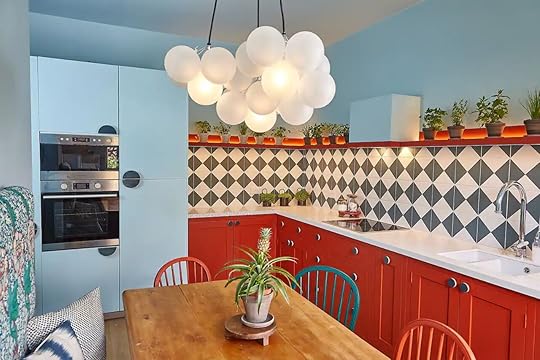 Photo: Airbnb
Photo: Airbnb Photo: Airbnb
Photo: Airbnb Photo: Airbnb
Photo: AirbnbSee more photosThis gleefully decorated Airbnb in Bath City Center is steps from the Roman and thermal baths and handy for the train station. The property spans three floors of a Grade II listed Georgian building and culminates in a huge roof terrace where you can follow the ebb and flow of the streets. All rooms are individually styled and there’s a wood-burning stove for cooler months.
Ten guests, four bedrooms
Price: $516 per night
 Photo: Airbnb
Photo: Airbnb Photo: Airbnb
Photo: Airbnb Photo: Airbnb
Photo: Airbnb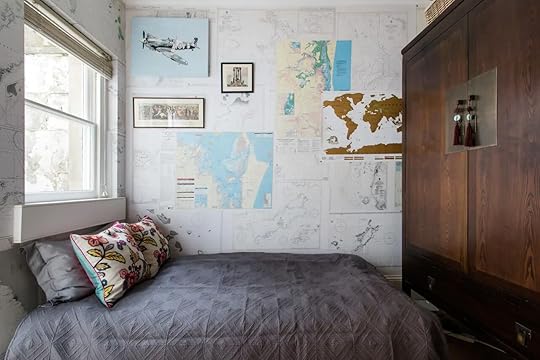 Photo: Airbnb
Photo: AirbnbSee more photosBuilt in 1794, this Grade I listed townhouse was briefly the home of Jane Austen where her dabblings with the elite influenced her writing. The apartment is furnished with a leather-topped Victorian partner’s desk in case you feel inspired to put pen to paper. Classic Georgian features include flagstone floors and paneling whereas the furnishings and decor span the past few centuries. It’s thoroughly modernized and across the street from the Holburne Museum.
Three guests, two bedrooms
Price: $241 per night
 Photo: Airbnb
Photo: Airbnb Photo: Airbnb
Photo: Airbnb Photo: Airbnb
Photo: Airbnb Photo: Airbnb
Photo: AirbnbSee more photosRetreat to hilly Camden for a peaceful retreat which is still walkable from the city center. This elevated apartment is beautifully appointed with contemporary furnishings and a wood stove. The yard overlooks the spa town and its green hills and is decked out with a grill and a dining table. This is one of the best Airbnbs in Bath for couples who value solitude and enjoy cooking on the road.
Two guests, one bedroom
Price: $124 per night
 Photo: Airbnb
Photo: Airbnb Photo: Airbnb
Photo: Airbnb Photo: Airbnb
Photo: Airbnb Photo: Airbnb
Photo: AirbnbSee more photosThis family-friendly Airbnb in central Bath is around the corner from the Jane Austen Center and the trendy cafes of Milsom Street. A private hot tub is set up on the terrace, festooned with fairy lights and a spot to eat al fresco. The comfort of the rooms can’t be faulted and the location is golden for a mix of sightseeing and planning day trips via train.
Ten guests, four bedrooms
Price: $314 per night
 Photo: Airbnb
Photo: Airbnb Photo: Airbnb
Photo: Airbnb Photo: Airbnb
Photo: Airbnb Photo: Airbnb
Photo: AirbnbSee more photosChuck a pair of wellies in the trunk and bring Fido along for the ride: this pet-friendly Airbnb in Bath sits on the Cotswold Way and is two minutes from the Park and Ride bus stop for Bath. It’s luxuriously appointed to a country style with buckets of sunlight, a smart kitchen, and a brand-new wood burner. The host family has a friendly Weimaraner who might make an appearance on your patio.
Two guests, one bedroom
Price: $234 per night
 Photo: Airbnb
Photo: Airbnb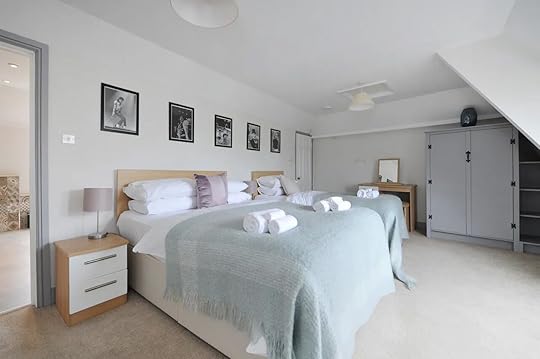 Photo: Airbnb
Photo: Airbnb Photo: Airbnb
Photo: Airbnb Photo: Airbnb
Photo: AirbnbSee more photosThis Georgian townhouse is chock-full of entertainment including a games den, movie lounge, bar, and sauna. There’s even a gym if hiking in the Mendip Hills isn’t enough. The bedrooms and lounge are illuminated with natural light and views of Bathwick Hill while the private courtyard is available to guests. Walcot is a central neighborhood within walking distance of the main sights.
Sixteen guests, six bedrooms
Price: $1,505 per night
 Photo: Airbnb
Photo: Airbnb Photo: Airbnb
Photo: Airbnb Photo: Airbnb
Photo: Airbnb Photo: Airbnb
Photo: AirbnbSee more photosEquidistant from Bath and Bristol, this Airbnb sits on the southwest boundary of the Cotswolds. The villa has a Californian vibe with its cantilevered glass walls and modern interiors spilling out onto a manicured backyard with a swimming pool and hot tub. There’s an outdoor kitchen and pizza oven compete with a sunken dining area ideal for spring and summer evenings in Somerset.
Ten guests, four bedrooms
Price: $1,041 per night
 Photo: Airbnb
Photo: Airbnb Photo: Airbnb
Photo: Airbnb Photo: Airbnb
Photo: Airbnb Photo: Airbnb
Photo: AirbnbSee more photosLive like royalty at this 18th-century folly on a private estate in the picturesque Midford Valley nine minutes south of Bath Spa Station. The rental is inclusive of the chapel and the stables where decor is a mixed bag of old and modern. A sun-drenched patio overlooks the rolling hills and is turned out with a Jacuzzi and barbecue. Elsewhere, you can challenge yourselves to the calisthenics course.
Twelve guests, five bedrooms
Price: $2,125 per night
 Photo: Airbnb
Photo: Airbnb Photo: Airbnb
Photo: Airbnb Photo: Airbnb
Photo: Airbnb Photo: Airbnb
Photo: AirbnbSee more photosIt’s about as central as you’ll find yet this romantic Bath Airbnb is tucked away in a surprisingly quiet courtyard off Alfred Street in bohemian Walcot. The copper bath is fully secluded and best experienced in the evening with a glass of wine as the stars twinkle above. All of the coolest restaurants and bars are within walking distance but the kitchen has you covered if you fancy flexing your culinary skills.
Two guests, one bedroom
Price: $227 per night
 Photo: Airbnb
Photo: Airbnb Photo: Airbnb
Photo: Airbnb Photo: Airbnb
Photo: Airbnb Photo: Airbnb
Photo: AirbnbSee more photosSpare yourself the schlep to Thermae Bath Spa at this one-bedroom hideaway with a private spa in the courtyard. There’s no kitchen in the apartment which gives you the perfect excuse to dive into Walcot’s gastropubs, cocktail lounges, and tea rooms. Remember to message the host if you want to toast your stay with an arrival bottle of chilled Veuve Clicquot.
Two guests, one bedroom
Price: $256 per night
Considering the humble size of the city, there is an astonishing mix of things to do in Bath. This is a short list of what to see and do locally.
Wash away your worries at the adult-only Thermae Bath Spa. A two-hour session grants access to Minerva Bath, the rooftop pool, and the sensory wellness suite complete with steam rooms and an ice chamber. Walk-ins are accommodated where possible but advance booking is recommended.Prelude your mineral soak by touring the original Roman Baths and learning about the ancient bathing rituals practiced by Romans in Aquae Sulis.Live out your Bridgerton fantasies in front of John Wood’s Royal Crescent – costume optional. No. 1 Royal Crescent recreates a typical elite Georgian residence tricked out with furniture, paintings, and trinkets.Light a candle and marvel at the fan-vaulted ceiling and stained glass windows in Bath Abbey. Tickets are sold on the door if you want to enter the nave and chapel.Munch your way through traditional afternoon tea at the Pump Room Restaurant as a live pianist plays. Reservations are strongly encouraged.Learn about the life and works of the Regency writer at the Jane Austen Center.View the vast collection of oil paintings, sculptures, and porcelain ware at the Holburne Museum.Track down the Temple of Minerva in the Bath Botanical Gardens.Accessible via bus or a 30-minute walk, the National Trust’s Prior Park Landscape Garden comprises gentle hiking trails, 18th-century monuments, and awesome views.Embark on a day trip to the Cotswolds Area of Natural Beauty (AONB). Chippenham is a 10-minute train ride while Castle Combe is half an hour behind the wheel. Stonehenge and Bristol are two other easy day trips from Bath.Convince yourself that you’re in Italy while dining at Ponte Vecchio with a view of Pulteney Bridge. The design was inspired by its namesake and the Rialto Bridge.Take a backstage tour or see a play at Theater Royal.Find out what’s on at Komedia, the Forum, or the Little Theater.Plan your trip to coincide with the Bath Comedy Festival (April), the Bath Festival (May) of literature and music, or the Bath Children’s Literature Festival (September/October).Where to stay in Bath?Bath City Center refers to the area on the north bank of the River Avon from the train station to the iconic Royal Crescent. Home to the best hotels and Airbnbs in Bath, this is where to stay in Bath for a first-time visit or weekend. All the main sights are within walking distance while outlying attractions are reachable on foot, by bike, or bus.
Owing to the number of bars, restaurants, and concert venues, Bath gets busy on Friday and Saturday nights. If you’re an early bird, you may prefer to stay in the neighborhoods of Bathwick, Walcot, or Camden. These enclaves are quieter yet within walking distance of the abbey and baths.
If you are planning a longer vacation in and around Bath and the Cotswolds, it’s worth considering the outskirts. In this case, you can consider using the 24/7 Park and Ride bus service for nipping into town. It’s free to park your car for the day – all you have to pay is the bus fare. 
November 17, 2023
11 Black Friday Luggage Deals Every Jet-Setter Will Love
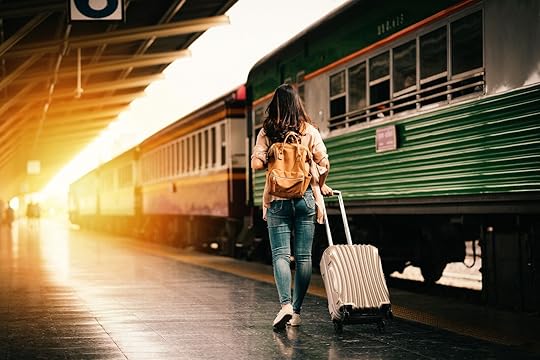
If you’re in need of a new piece of luggage, now is the time to bite the bullet and purchase one. Black Friday luggage deals are out and you can save hundreds of dollars on backpacks, tote bags, carry-ons, and check-in suitcases if you buy from one of the following brands. Even the most expensive and snazziest brands out there are participating in the sale, including AWAY, Paravel, and Roam, so you’d better get on it.
We hope you love the luggage and bags we recommend! Just so you know, Matador may collect a small commission from the links on this page if you decide to make a purchase.
Roam luggage’s Black Friday dealsAway’s Black Friday dealsTortuga’s Black Friday dealsParavel’s Black Friday dealsAdventurist Backpack Co.’s Black Friday dealsRoark’s Black Friday dealsCotopaxi’s Black Friday dealsJuly’s Black Friday dealsMonos’ Black Friday dealsSteamLine Luggage’s Black Friday dealsKorchmar’s Black Friday dealsRoam luggage’s Black Friday dealsView this post on InstagramA post shared by Roam Luggage (@roamluggage)
What: $100 off all ROAM customizable hard-side luggage
When: Monday, November 13th to Monday, November 27th, 2023
Where: ROAMLuggage.com
Additional info: ROAM luggage is made-to-order by American artisans in Vidalia, Georgia, and is completely color-customizable, from the zipper to the lining, handle, wheels, and more. ROAM luggage have a lifetime warranty.
Away’s Black Friday dealsView this post on Instagram
What: 20 percent off all suitcases
When: From Thursday, November 16 until Monday, November 27, 2023 at 11:59 PM ET or until supplies are exhausted.
Where: Awaytravel.com
Additional info: Away is extremely well-known for its stylish and durable aluminium suitcases. Matador Network contributor Johnny Motley tested and reviewed Away’s Original Carry-On and called it “the best roller case for your money.”
Tortuga’s Black Friday dealsView this post on InstagramA post shared by Tortuga (@tortugabackpacks)
What: Tortuga is offering 25 percent off travel accessories when you buy two or more, as well free Travel Pouches ($50 value) with the purchase of any travel backpack.
When: From Friday, November 24 to Monday, November 27, 2023
Where: Tortugabackpacks.com
Additional info: The Tortuga Travel Backpack 40L was tested by Matador Network editor Tim Wenger which he praised as “the best travel backpack for your money.” Read the detailed review to learn more.
Paravel’s Black Friday dealsView this post on InstagramA post shared by Paravel (@paravel)
What: 30 percent off all products listed on their website, excluding Aviator100, Glacial Blue Weekender, Glacial Blue Packing Cube Quad, and the Rove Collection.
When: Until Monday, November 27th, 2023 at 11:59 PM PST
Where: Paravel's Black Friday + Cyber Monday Sale: 30% Off Sitewide For Limited Time! " rel="sponsored">Tourparavel.com
" rel="sponsored">Tourparavel.com
Additional info: Maker of some of the most elegant luggage on the market, Paravel is a Climate Neutral company that uses recycled materials, including recycled vegan leather and recycled zippers. Paravel’s Aviator Grand luggage was thoroughly reviewed by Matador Network.
Adventurist Backpack Co.’s Black Friday dealsView this post on InstagramA post shared by Adventurist Backpack Co. (@adventuristbackpacks)
What: 15 percent off all bags
When: From Thursday, November 24 to Tuesday, November 28, 2023
Where: Use the code GIVEBACK15 on Adventuristbackpacks.com
Additional info: Adventurist Backpack Co. will provide 25 meals to families in need across the US for every bag sold, via their partnership with the non-profit Feeding America.
Roark’s Black Friday dealsView this post on InstagramA post shared by Roark (@roark)
What: 60 percent off past season styles
When: Until November 27, 2023
Where: Roark.com
Additional info: Roark’s bags are designed for adventurers and focus on durability, quality, and comfort. Their mission is to create gear that work “from the trail to the bar.”
Cotopaxi’s Black Friday dealsView this post on InstagramA post shared by Cotopaxi (@cotopaxi)
What: 25 person off the Fall 2023 collection (excluding Allpa and Del Dia), including selected packs from the Cada Dia collection.
When: From Friday, November 17 to Monday, November 27, 2023.
Where: Cotopaxi.com
Additional info: Utah-based gear and apparel company Cotopaxi makes some of the most colorful packs on the market. Cotopaxi is a Climate Neutral certified company and over 90 percent of its products “contain repurposed, recycled, or responsible materials.” To learn more about Cotopaxi’s bags, check out Matador Network‘s review of the Allpa 28L Travel Pack and the Batac 16L Backpack.
July’s Black Friday dealsView this post on Instagram
What: Spend $300, save 10 percent; spend $500, save 15 percent; spend $1000, save 20 percent.
When: Until Tuesday, November 28, 2023 at 11:59 PM EDT
Where: July.com
Additional info: July offers colorful, sleek, and elegant luggage that have a lifetime waranty. To learn more about July luggage, read Matador Network editor Tim Wenger’s review of the July Checked Plus.
Monos’ Black Friday dealsView this post on InstagramA post shared by Monos (@monostravel)
What: Up to 40 percent off sitewide with 15% off discount code BLACKFRIDAY
When: From Friday, November 24 to Sunday, November 26, 2023
Where: Monos.com Use the code BLACKFRIDAY for a 15 percent off discount.
Additional info: Monos luggage have a minimalistic aesthetic, with simple lines and tonal colors. Monos is a Climate Neutral company. To learn more about Monos’ luggage, read Matador Network editor Suzie Dundas’ review of the Monos Hybrid Check-in.
SteamLine Luggage’s Black Friday dealsView this post on InstagramA post shared by SteamLine Luggage | Travel Beautifully (@steamlineluggage)
What: 20 percent off sitewide
When: Until Tuesday, November 28, 2023
Where: Steamlineluggage.com
Additional info: SteamLine Luggage creates gorgeous luggage (including hatboxes) and accessories inspired by the beauty of traveling cases and bags of the early 20th century — but all fitted with modern amenities. The collections on offer span a wide range of colors and patterns to satisfy every chic travelers out there.
Korchmar’s Black Friday dealsView this post on InstagramA post shared by Korchmar (@korchmarbags)
What: Up to 30 percent off sitewide and free monogramming
When: Until November 27, 2023
Where: Korchmar.com
Additional info: Korchmar is a family-owned business that crafts leather luggage, bags, and accessories (from briefcases to dopp kits and rolling bags) in workshops in the Dominican Republic and Naples, Florida. 
9 Black Friday Luggage Deals Every Jet-Setter Will Love

If you’re in need of a new piece of luggage, now is the time to bite the bullet and purchase one. Black Friday luggage deals are out and you can save hundreds of dollars on backpacks, tote bags, carry-ons, and check-in suitcases if you buy from one of the following brands. Even the most expensive and snazziest brands out there are participating in the sale, including AWAY, Paravel, and Roam, so you’d better get on it.
We hope you love the luggage and bags we recommend! Just so you know, Matador may collect a small commission from the links on this page if you decide to make a purchase.
Roam luggage’s Black Friday dealsAway’s Black Friday dealsTortuga’s Black Friday dealsParavel’s Black Friday dealsAdventurist Backpack Co.’s Black Friday dealsRoark’s Black Friday dealsCotopaxi’s Black Friday dealsJuly’s Black Friday dealsMonos Black Friday dealsRoam luggage’s Black Friday dealsView this post on InstagramA post shared by Roam Luggage (@roamluggage)
What: $100 off all ROAM customizable hard-side luggage
When: Monday, November 13th to Monday, November 27th, 2023
Where: ROAMLuggage.com
Additional info: ROAM luggage is made-to-order by American artisans in Vidalia, Georgia, and is completely color-customizable, from the zipper to the lining, handle, wheels, and more. ROAM luggage have a lifetime warranty.
Away’s Black Friday dealsView this post on Instagram
What: 20 percent off all suitcases
When: From Thursday, November 16 until Monday, November 27, 2023 at 11:59 PM ET or until supplies are exhausted.
Where: Awaytravel.com
Additional info: Away is extremely well-known for its stylish and durable aluminium suitcases. Matador Network contributor Johnny Motley tested and reviewed Away’s Original Carry-On and called it “the best roller case for your money.”
Tortuga’s Black Friday dealsView this post on InstagramA post shared by Tortuga (@tortugabackpacks)
What: Tortuga is offering 25 percent off travel accessories when you buy two or more, as well free Travel Pouches ($50 value) with the purchase of any travel backpack.
When: From Friday, November 24 to Monday, November 27, 2023
Where: Tortugabackpacks.com
Additional info: The Tortuga Travel Backpack 40L was tested by Matador Network editor Tim Wenger which he praised as “the best travel backpack for your money.” Read the detailed review to learn more.
Paravel’s Black Friday dealsView this post on InstagramA post shared by Paravel (@paravel)
What: 30 percent off all products listed on their website, excluding Aviator100, Glacial Blue Weekender, Glacial Blue Packing Cube Quad, and the Rove Collection.
When: Until Monday, November 27th, 2023 at 11:59 PM PST
Where: Paravel's Black Friday + Cyber Monday Sale: 30% Off Sitewide For Limited Time! ">Tourparavel.com
">Tourparavel.com
Additional info: Maker of some of the most elegant luggage on the market, Paravel is a Climate Neutral company that uses recycled materials, including recycled vegan leather and recycled zippers. Paravel’s Aviator Grand luggage was thoroughly reviewed by Matador Network.
Adventurist Backpack Co.’s Black Friday dealsView this post on InstagramA post shared by Adventurist Backpack Co. (@adventuristbackpacks)
What: 15 percent off all bags
When: From Thursday, November 24 to Tuesday, November 28, 2023
Where: Use the code GIVEBACK15 on Adventuristbackpacks.com
Additional info: Adventurist Backpack Co. will provide 25 meals to families in need across the US for every bag sold, via their partnership with the non-profit Feeding America.
Roark’s Black Friday dealsView this post on InstagramA post shared by Roark (@roark)
What: 60 percent off past season styles
When: Until November 27, 2023
Where: Roark.com
Additional info: Roark’s bags are designed for adventurers and focus on durability, quality, and comfort. Their mission is to create gear that work “from the trail to the bar.”
Cotopaxi’s Black Friday dealsView this post on InstagramA post shared by Cotopaxi (@cotopaxi)
What: 25 person off the Fall 2023 collection (excluding Allpa and Del Dia), including selected packs from the Cada Dia collection.
When: From Friday, November 17 to Monday, November 27, 2023.
Where: Cotopaxi.com
Additional info: Utah-based gear and apparel company Cotopaxi makes some of the most colorful packs on the market. Cotopaxi is a Climate Neutral certified company and over 90 percent of its products “contain repurposed, recycled, or responsible materials.” To learn more about Cotopaxi’s bags, check out Matador Network‘s review of the Allpa 28L Travel Pack and the Batac 16L Backpack.
July’s Black Friday dealsView this post on Instagram
What: Spend $300, save 10 percent; spend $500, save 15 percent; spend $1000, save 20 percent.
When: Until Tuesday, November 28, 2023 at 11:59 PM EDT
Where: July.com
Additional info: July offers colorful, sleek, and elegant luggage that have a lifetime waranty. To learn more about July luggage, read Matador Network editor Tim Wenger’s review of the July Checked Plus.
Monos’ Black Friday dealsView this post on InstagramA post shared by Monos (@monostravel)
What: Save up to 30 percent on everything listed on their website
Where: Use the code EARLYBF on Monos.com
Additional info: Monos luggage have a minimalistic aesthetic, with simple lines and tonal colors. Monos is a Climate Neutral company. To learn more about Monos’ luggage, read Matador Network editor Suzie Dundas’ review of the Monos Hybrid Check-in. 
Extreme BIPOC Adventurer? You Could Win a Scholarship To ‘Polar Academy’

It’s no secret that the outdoor world is overwhelmingly white. But if you’re from an under-represented group in the outdoor industry, and like the idea of learning to pack a sled for travel on ice or shoot stunning cold-weather travel photos, you’re in luck. A ‘Polar Academy’ training camp is being held in Minnesota in January, and six BIPOC individuals will be invited to attend on a full scholarship, learning skills to survival in the world’s most inhospitable climates.
View this post on Instagram
A post shared by Eric Larsen (@elexplore)
Eric Larsen, who remains the only person to reach the North Pole, South Pole, and summit of Mount Everest in a single year, is one of the world’s most well-known polar explorers and adventurers and will be leading the nine-day adventure. Other leaders will include adventurer and filmmaker Emily Ford, Bicycle Nomad founder Erick Cedeno, and cold-weather gear designer Danica Carey. And joining them to select the winners is Rohan Freeman, the first African-American to complete the ‘Seven Summits.’
Scholarship recipients must be willing to sleep in “extreme polar conditions,” plus meet a few additional criteria, including having a reasonable level of fitness, agreeing to have limited access to modern conveniences, and being willing to pull a fully loaded sled in sub-freezing conditions for nearly a week. But if all that sounds good, the application is available online — just make sure to submit it before December 1.

Participants should expect extremely cold weather and possible white-out conditions each day. Photos: Polar Academy
The scholarship is dedicated to African-American polar explorer Matthew Henson, who made 18 arctic expeditions in the early 1900s and was likely the first to reach the North Pole. And for Polar Academy co-leader Emily Ford, the first woman to thru-hike Wisconsin’s 1,200-mile Ice Age National Scenic Hiking Trail in winter, the decision to name the scholarship in his honor and limit it to BIPOC adventurers is about more than just creating a diverse learning environment. “This is also social justice. This is racial justice,” she told Matador. “My hope is that more POC become more comfortable in the outdoors so that the impact is even greater.”
“My [outdoor] experience has been full of joy due to my innate love of the wilderness,” she added, “and also full of great sadness, as I generally am the only POC in the groups I run in, outdoor films I see, and outdoor books I read.”
View this post on Instagram
A post shared by Emily Ford (@emilyontrail)
“As an old white guy, I realize I have been given significant opportunities just because of the color of my skin,” Larsen told Matador. “I’ve done other more open-ended scholarships in the past; however, I think that traditionally, most BIPOC individuals have faced significant barriers, and I wanted to use my experience, connections, and platform to remove some of those barriers for participation.” Larsen added that he hopes the training could be the start of a career in polar exploration for one of the scholarship winners, to both carry on the story of Matthew Henson and begin their own outdoor legacy.
Winners will be announced on December 8, giving them — hopefully — enough time to train for the adventure before it begins on January 20, 2024. 
Top Large Group Airbnbs for the Paris Olympics
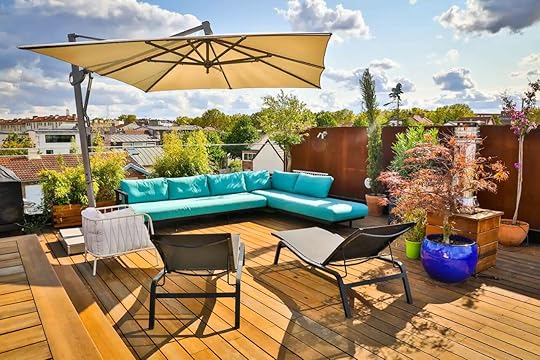
Travelers flock to Paris for the art and the macarons but next summer all eyes will be on the 14,900 Olympic and Paralympic athletes going for the gold. The 2024 Paris Games will break with tradition and host contests in the city’s grandest monuments and provide free viewing areas. Running in tandem with the sports program, the Cultural Olympiad offers arts and immersive events for the entire clan.
When deciding where to stay for the Paris Olympics as a group, you can consider an inner-city penthouse with views or look at villas closer to the suburban stadiums. Accommodation for larger parties is more limited but the Paris Metro does make it easy to get around the venues and sights. These all-star Airbnbs are perfect for large groups and families heading to the Paris Olympics. They’ll not stick around for long so you’ll need to sprint.
Heading to Paris for the Olympics? Here’s our rundown of everywhere to stay in the city: Traveling To the Paris Olympics With Your Partner? Book These Romantic Airbnbs Budget-Friendly Airbnbs for the Paris Olympics The Top Airbnbs Near Paris’ Olympic Stadiums and Event Centers
We hope you love these large-group Airbnbs for the Paris Olympics! Just so you know, Matador may collect a small commission from the links on this page if you decide to book a stay. Listed prices are accurate as of the time of publication.
Luxe Airbnb with Eiffel Tower views and skyline spa Photo: Airbnb
Photo: Airbnb Photo: Airbnb
Photo: Airbnb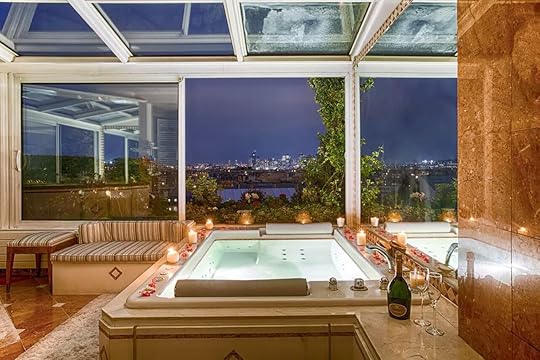 Photo: Airbnb
Photo: Airbnb Photo: Airbnb
Photo: AirbnbSee more photosFusing traditional and modern décor, this exclusive penthouse enjoys a quiet setting west of the Trocadéro close to sports grounds and sights. The roof deck is a green haven where you can sip Champagne with a view of the Eiffel Tower while monitoring the scoreboards. The fireplace will be redundant during the Summer Olympics but just try and resist whiling away an afternoon sizzling in that panoramic hot tub.
Nine guests, five bedrooms
Price: $3,496 per night
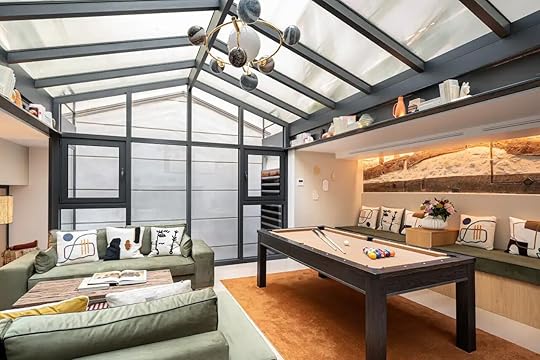 Photo: Airbnb
Photo: Airbnb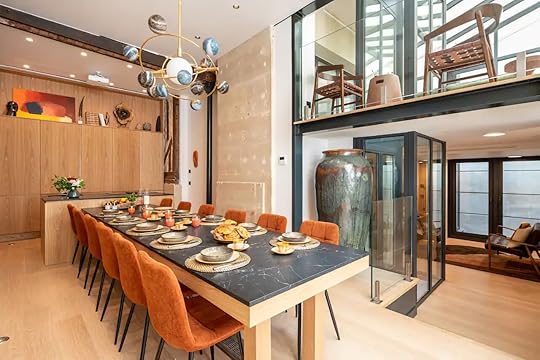 Photo: Airbnb
Photo: Airbnb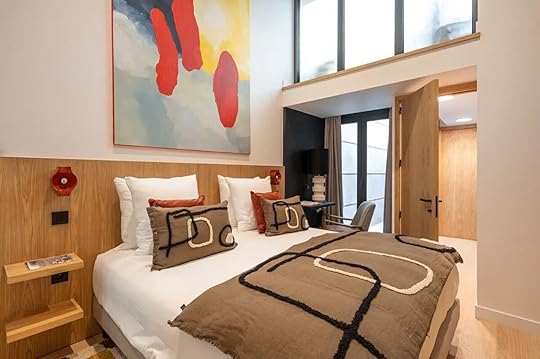 Photo: Airbnb
Photo: Airbnb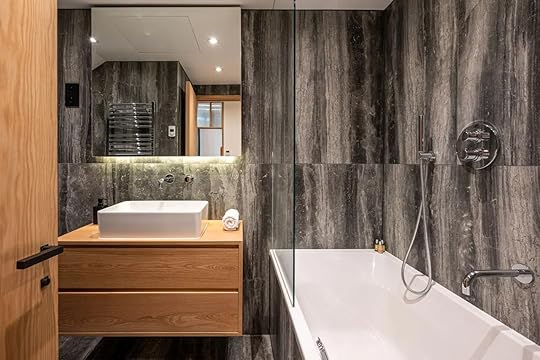 Photo: Airbnb
Photo: AirbnbSee more photosThis Luxe Paris Airbnb in Le Marais is the result of a joint project from an Italian architect and a Parisian interior designer. The oversized penthouse features a covered courtyard and is topped with a glass roof. Plenty of wood, stone, and natural light create a calming home where you can unwind with a game of pool or spa session. The location is handy for Gare de l’Est, Gare du Nord, the Bercy Arena, and central Olympic venues.
Ten guests, four bedrooms
Price: $3,722 per night
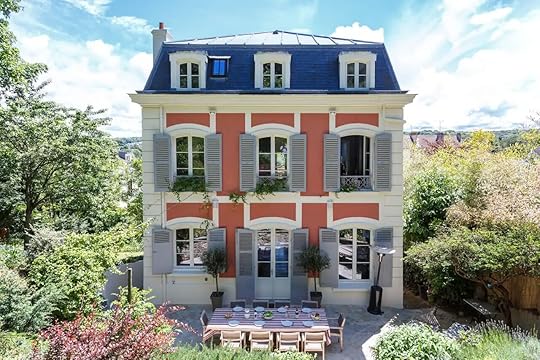 Photo: Airbnb
Photo: Airbnb Photo: Airbnb
Photo: Airbnb Photo: Airbnb
Photo: Airbnb Photo: Airbnb
Photo: AirbnbSee more photosThis beautiful Île-de-France mansion is located on the periphery of Paris. Only a 10-minute walk from the Sèvres – Ville-d’Avray train station makes it easy to day trip over to Château de Versailles for the equestrian events. The rental itself is a dream with tons of space indoors and out where you can host your own mini athletics tournament. There’s a swing set for tots and a games room for all ages.
Ten guests, five bedrooms
Price: $524 per night
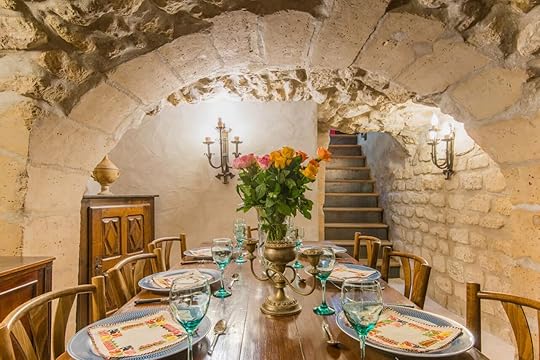 Photo: Airbnb
Photo: Airbnb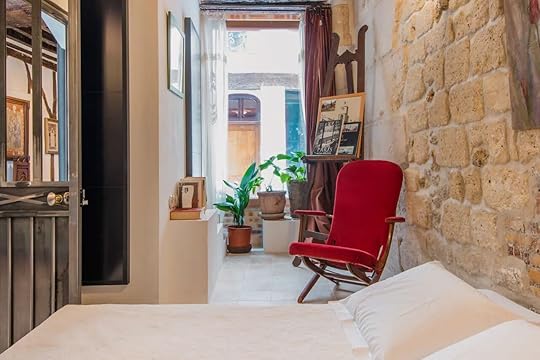 Photo: Airbnb
Photo: Airbnb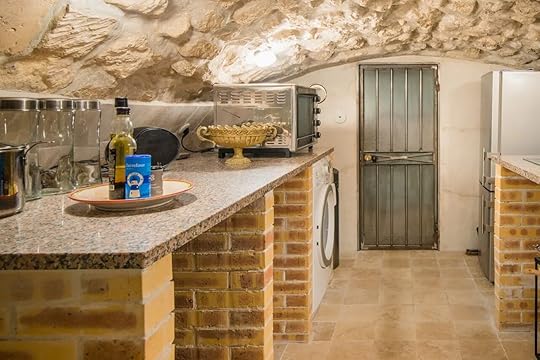 Photo: Airbnb
Photo: Airbnb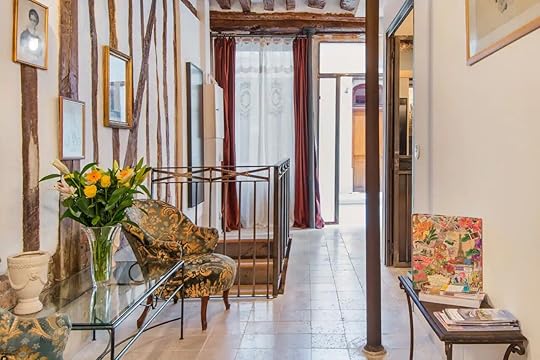 Photo: Airbnb
Photo: AirbnbSee more photosPartially underground, this three-story dwelling is located on one of the oldest streets in Paris. It’s fashioned from the original stone and timber beams although the builders managed to chisel in a state-of-the-art kitchen and hook up a solid Wi-Fi connection so you can follow the latest scores. The Le Marais quarter is awash with restaurants, bars, and nightclubs while you’ll have the Olympic venues right on the doorstep.
Eight guests, four bedrooms
Price: $409 per night
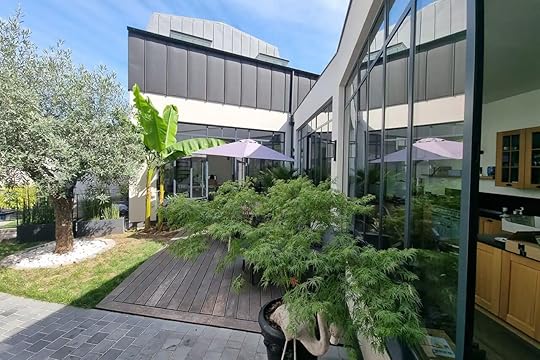 Photo: Airbnb
Photo: Airbnb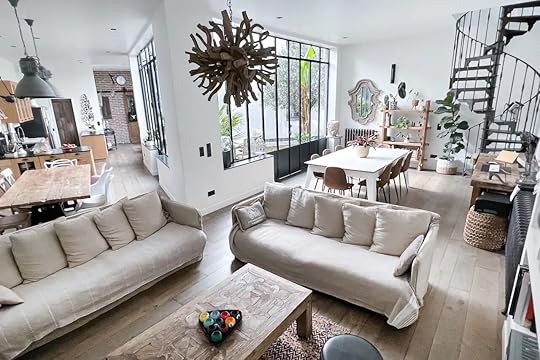 Photo: Airbnb
Photo: Airbnb Photo: Airbnb
Photo: Airbnb Photo: Airbnb
Photo: AirbnbSee more photosThis architectural wonder is located in an artistic suburb near Paris La Défense Arena popular with creatives and families. It spares you the hustle and bustle and is a strategic location for getting to Parc des Princes, Versailles, and Champs-Élysées. The entire townhouse and its yard are bathed in natural light while all appliances are top-notch. You’ll need to be nimble and relatively athletic yourself to access the game’s loft.
Ten guests, five bedrooms
Price: $704 per night
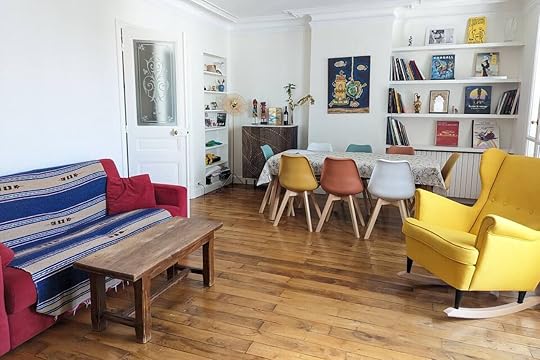 Photo: Airbnb
Photo: Airbnb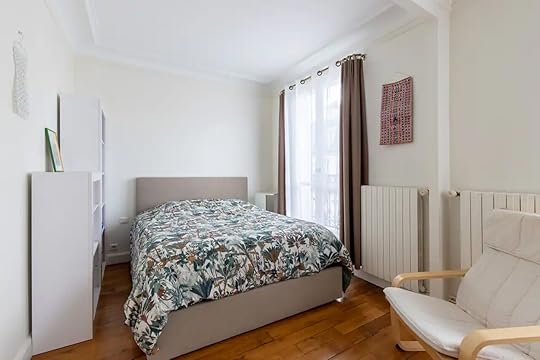 Photo: Airbnb
Photo: Airbnb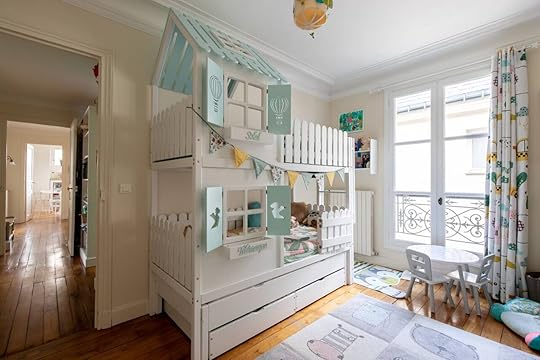 Photo: Airbnb
Photo: Airbnb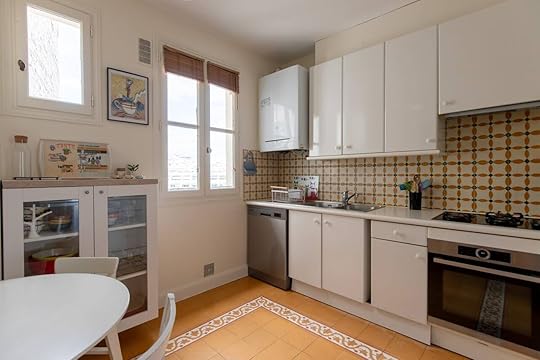 Photo: Airbnb
Photo: AirbnbSee more photosAccessible via elevator, this typical Haussmannian apartment is located on the 5th floor and grants a charming view of the Parisian roofs. The master bedroom has a crib, the second is set up with a fairytale bunk, and the third is a superior sofa bed. It’s stocked with games and books while additional toddler gear is available upon request. There are several metro and RER stations minutes away that link to the Paris Olympic centers.
Nine guests, three bedrooms
Price: $375 per night
 Photo: Airbnb
Photo: Airbnb Photo: Airbnb
Photo: Airbnb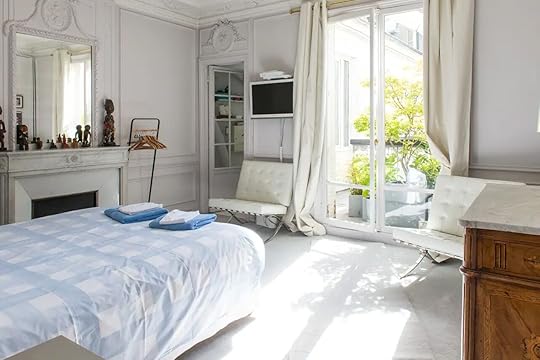 Photo: Airbnb
Photo: Airbnb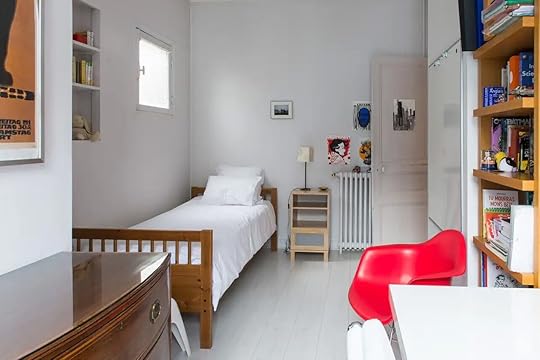 Photo: Airbnb
Photo: AirbnbSee more photosThis chic Paris Airbnb is convenient for contests held at the Olympic Stadium, Parc des Princes, and the Eiffel Tower Stadium. It’s light and lovely with high ceilings, dormer windows, and several balconies. Delicate stained glass details and splashes of color add further character while budding chefs will appreciate the gourmet kitchen. Brasseries and bakeries line the street and Péreire Metro Station is a minute away.
Eight guests, five bedrooms
Price: $837 per night
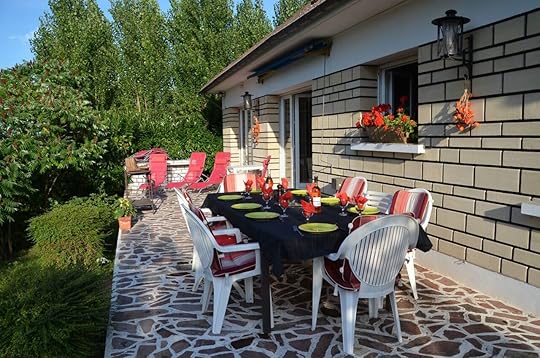 Photo: Airbnb
Photo: Airbnb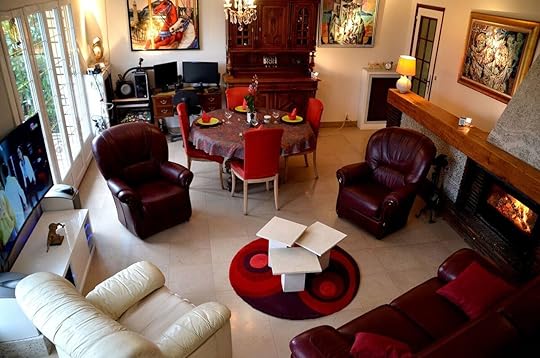 Photo: Airbnb
Photo: Airbnb Photo: Airbnb
Photo: Airbnb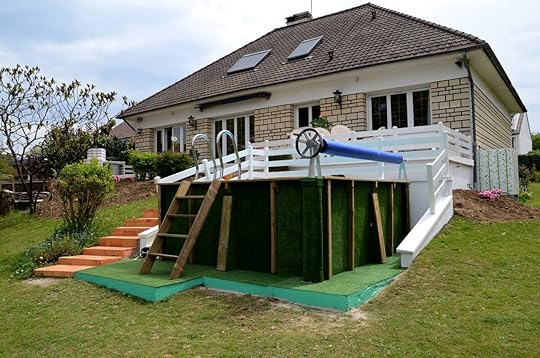 Photo: Airbnb
Photo: AirbnbSee more photosThis Play Airbnb for large groups is steps from the Olympic Nautical Stadium and 20 minutes from Disneyland Paris. The interiors are cozily decorated and appointed with everything you might need to cook and stay connected. It’s the backyard that steals the limelight, complete with a plunge pool, trampoline, and long jump-ready lawn. Head down to the basement where you can host your own foosball and ping pong tournament.
Nine guests, four bedrooms
Price: $370 per night
 Photo: Airbnb
Photo: Airbnb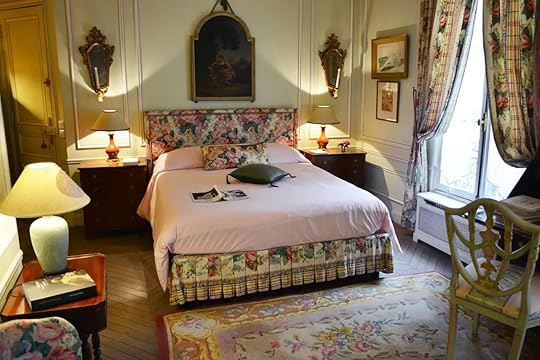 Photo: Airbnb
Photo: Airbnb Photo: Airbnb
Photo: Airbnb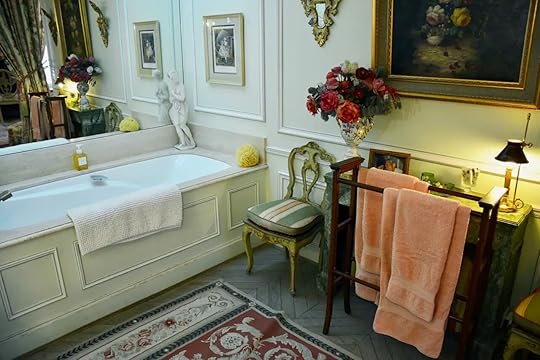 Photo: Airbnb
Photo: AirbnbSee more photosIf you’re struggling to squeeze in a trip to the Louvre around the Games, this stunning apartment is essentially a private art museum. The four-bedroom rental is swarming with antiques, oil paintings, and period furnishings. It’s sublimely comfortable and feels almost like a castle stay in rural France. Modern conveniences are discreetly tucked in among the collections and you’re a stone’s throw from the Olympic venues in central Paris.
Ten guests, four bedrooms
Price: $952 per night
 Photo: Airbnb
Photo: Airbnb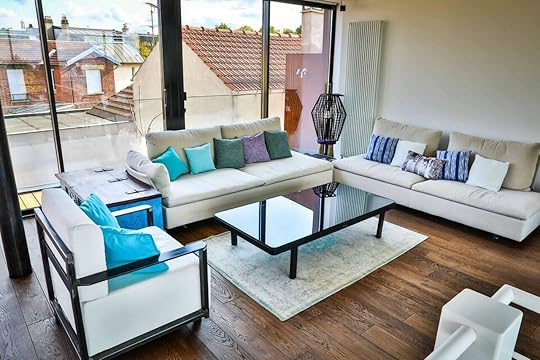 Photo: Airbnb
Photo: Airbnb Photo: Airbnb
Photo: Airbnb Photo: Airbnb
Photo: AirbnbSee more photosYou might assume this knockout villa with a huge backyard oasis is located in Southern France but think again. Large enough for the whole clan, this family-friendly Airbnb is a short commute from Parc des Princes and the South Paris Arena (Paris Expo). The private yard comes with a playground and heated swim spa while the basement is a gym-cinema hybrid. Head to the rooftop terrace where you can dine with a skyline view.
Eight guests, four bedrooms
Price: $825 per night
 Photo: Airbnb
Photo: Airbnb Photo: Airbnb
Photo: Airbnb Photo: Airbnb
Photo: Airbnb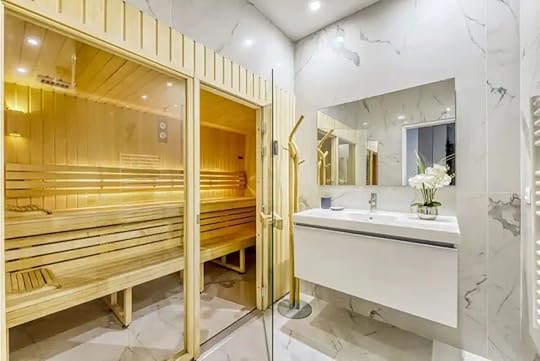 Photo: Airbnb
Photo: AirbnbSee more photosThis tasteful apartment is within walking distance of Sacré Coeur and the Moulin Rouge. The vintage-inspired furniture provides classy comfort plus there’s a stack of vinyl records to entertain the gang over a cook-off. Best of all, the rental has a private sauna where you ease the tension after an adrenaline-packed day. Rely on the Abbesses Metro Station to get you to all the Olympic venues.
Ten guests, four bedrooms
Price: $530 per night
Tickets for all sports, games, and the opening and closing ceremonies are now available to purchase via the Paris Olympics and Paralympics official website. These are sold on a first-come, first-served basis in real time with no draws or ballots. Resale tickets will be available in early 2024. Tickets start at €24 for Olympic sports and €15 for Paralympic sports.
What is the limit on tickets for the Paris Olympics?A maximum of six tickets can be purchased per session although select games are limited to a maximum of four tickets. Each account holder may purchase a maximum of 30 tickets across the Paris Olympics and Paralympics.
Do children need tickets for the Paris Olympics?Children do need a valid ticket to attend any of the Paris 2024 Olympic and Paralympic Games. The Family Pass allows you to buy up to two children’s tickets for the Paralympic Games for only €10. Those aged 16 and over can create an account and purchase tickets.
What is the Paris 2024 Hospitality program?The Paris 2024 Hospitality program lets you experience the Olympic and Paralympic Games with upgraded service. Packages vary across three tiers but generally include a mix of private box seating, lounge access, dining, entertainment, transport, and city tours. Larger groups of 10 people or more can reach out to the Corporate and Large Groups Hospitality team. 
November 16, 2023
Where To Stay, Eat, and Play in Quebec for the Fall Trip of a Lifetime

Fall is the best time of the year to head to Quebec — especially if you’re the outdoorsy type. The province is chock-full of opportunities to hike and paddle among some of the brightest, most colorful leaves out there. It’s also the perfect time to spot beluga whales on the St. Lawrence River and zipline above the multi-colored foliage of Charlevoix. And after all the efforts and excitement, you can reward yourself with local fall-focused treats: apple crêpes and a maple coffee, among other indulgences.
We hope you love the spaces and stays we recommend! Just so you know, Matador may collect a small commission from the links on this page if you decide to book a stay. Listed prices are accurate as of the time of publication.
How to get to QuebecThe easiest and quickest way to get to Quebec City from the United States is to fly directly to Quebec City Jean Lesage International Airport (YQB). The first views of the fall foliage and St. Lawrence River from the air are almost as pleasant as the Canadian border agents at this smaller but well-operated modern international airport. Alternatively, you can fly into Montreal. It’s less than a three-hour drive or train ride north to Quebec City.
If you’re up for an adventure, you can ride Amtrak’s Maple Leaf train to Toronto and then ride Via Rail to Quebec City. It’s a little more involved than flying, but it’s also a great way to see the foliage.
How to get around QuebecIf you plan to stay in Montreal or Quebec City for the duration of your trip, you can use your feet, local public transportation, or Uber. However, if you want to access the outdoors and make your way to the stunning areas of Charlevoix and Côte-Nord, plan to rent a car. Make all the arrangements to rent a vehicle prior to your visit to be sure to get a car upon arrival — spontaneity is rarely your friend when it comes to car rentals.
What to do in Quebec for the outdoorsy travelerIn Côte-Nord: Go whale watching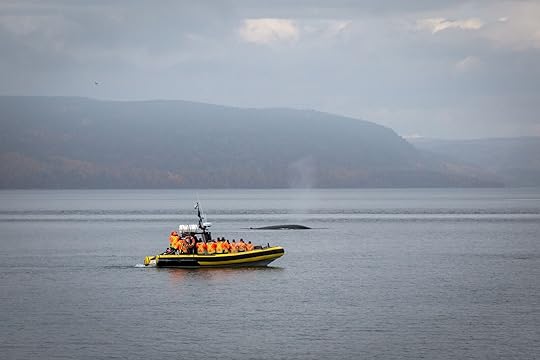
Photo: Potifor/Shutterstock
The St. Lawrence River is a prime location for whale watching, in large part due to the beluga whales that inhabit its water year-round. From the village of Tadoussac, you might get lucky and see a whale from the shores, but to maximize your chance of spotting one, head out on a 2.5-hour expedition with Croisières AML. They have phenomenal bilingual experts on board who will do their best so you can observe a beluga, humpback, fin, minke, and even the extremely rare blue whale. And if you don’t spot anything, you get a free ticket for another whale-watching cruise .
To learn more about the whales you’ll see during the expedition, stop by the Marine Mammal Interpretation Center (CIMM) beforehand. This interactive exhibit features whale skeletons that you can touch (and even walk inside of) to better understand the majestic creatures of the St. Lawrence River. Catch the well-produced video about the curious and playful beluga whales and fall in love with these unique marine creatures before you even see them in the wild.
In Côte-Nord: Hike in the Parc national du Fjord-du-Saguenay
Photo: jo Crebbin
/Shutterstock
Those looking to take in the views of the fjord for multiple days should consider a backpacking circuit in the Parc national du Fjord-du-Saguenay. With hut-to-hut, rustic camping, and lean-to options, you can plan out an epic route. For a day hike, consider Géant Lookout Hike (four to five hours and 6.3 miles) in the La Baie-Éternité Sector.
Walking small sections of the park without leaving Tadoussac is also possible by taking the short Pointe de l’Islet hike with boardwalks and views of the bay, or the Colline de l’Anse à l’Eau Trail to spot the roof of the Hotel Tadoussac through the fall foliage.
For more information about hikes in the Parc National du Fjord-du-Saguenay, including duration, elevation, and difficulty levels, check out this handy guide.
In Charlevoix: Climb a Via Ferrata and zipline through the fall foliageView this post on InstagramA post shared by Camille Labonté | Outaouais (@camille_labonte)
Take a deep breath before you step off the roof of the Fairmont Le Manoir Richelieu and zipline through fall foliage. While you can certainly skip it, the Project Vertical zipline is one of the fastest ways to get to the start of their Via Ferrata. With a cable keeping you safe, helmets, and well-placed rungs, this Via Ferrata is the right challenge for the active adult. Those with a fear of heights should know there are a few sections with a steep drop, but conquering the course will feel that much more rewarding. Then, head directly to the outdoor heated pools of the Fairmont Le Manoir Richelieu to relax your muscles.
In Charlevoix: Hike around the Parc national des Hautes‑Gorges-de-la-Rivière‑Malbaie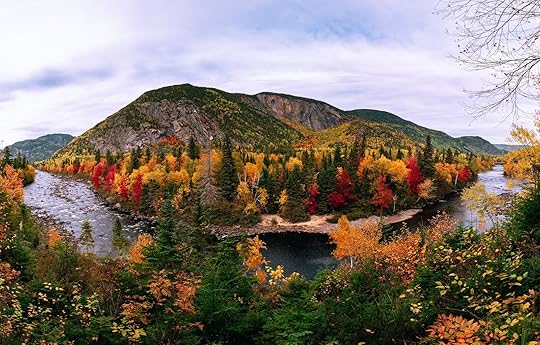
Photo: NicVW/Shutterstock
The rock face that you’ll see as you drive into the Parc national des Hautes‑Gorges-de-la-Rivière‑Malbaie is not only striking, it creates a microclimate within this valley where you’ll find that the fall foliage changes slightly slower than in the surrounding area. The national park is most often visited for the Acropole-des-Draveurs Trail (five to six hours and 6.9 miles round trip), which is a challenging trail with spectacular views but is closed by mid-October. For something shorter, consider the La Chute-du-Ruisseau-Blanc Trail (a 30-minute easy walk) that will take you through magnificent foliage and to a fantastic waterfall.
In the last few years, the park has tested out staying open through winter, offering everything from fat biking and ice skating on the river to self-guided ice climbing.
No matter the season, consider visiting the little exhibition inside the huts on either side of the bridge at the Draveur Visitors Centre to learn more about the wild lives of log drivers.
In Quebec City: Walk on a suspension bridge over a waterfall at Canyon Sainte-Anne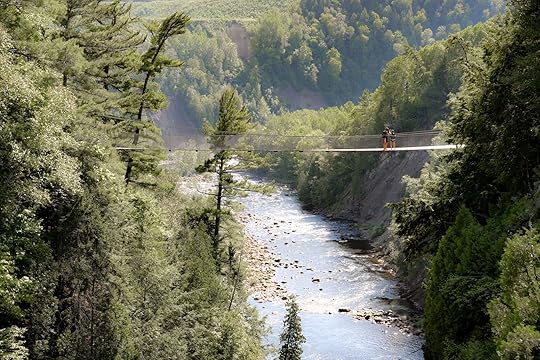
Photo: Kin Fok/Shutterstock
Only 45 minutes outside of Quebec city, the Canyon Sainte-Anne has it all: a kaleidoscope of fall foliage, a rushing waterfall, three bridges that offer different views of the cascade, and the possibility to ride on board a unique zipline that has you flying high over the canyon. Perfect for families or multigenerational groups, the trails to all three bridges (two of which are suspension bridges) are less than two-mile-long with interactive stories and photo-ops along the way. Be sure to visit before the canyon closes for winter.
In Quebec City: Learn more about Quebec’s history on a walking tourQuebec City is the oldest city in North America and, as such, visitors would do well to take the time to learn more about its past. But forget the history books, a walking tour of Old Quebec will do the trick and the Quebec 1608 guide service has many tour options to satisfy all your learning needs.
In Quebec City: Canoe and Hike in Parc national de la Jacques‑Cartier
Photo: Pierre Jean Durieu/Shutterstock
Nature is within arm’s reach with a quick 30-minute drive outside of Quebec City to the Parc national de la Jacques‑Cartier where you can hike, cycle, and paddle among the yellow birch and sugar maples. In fall, consider taking a rabaska canoe ride with a naturalist guide to see the bright colors of the foliage reflected in the Jacques-Cartier river. Alternatively, have a park warden guide you on the Rock Shelters discovery hike to find unusual moss as you scramble through rock crevices. If you prefer to take a self-guided hike, there are multiple trails in the park suitable for all levels.
In Quebec City: Bike Around the Île d’Orléans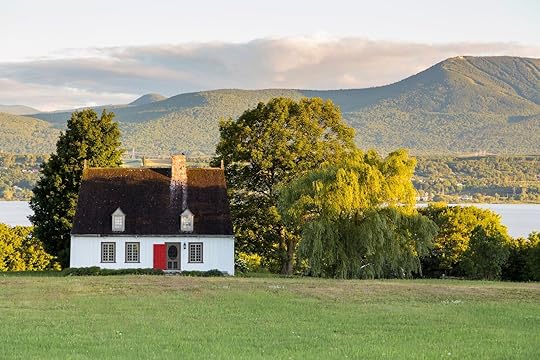
Photo: Anne Richard/Shutterstock
Right in the middle of the St. Lawrence River is the Île d’Orléans, an idyllic island seemingly plucked from a rural setting where there are fields, farms, and artisans across six villages, each dotted with 17th-century ancestral homes. Just 30 minutes from Quebec City, across the Pont de l’Île bridge, you can drive around the island by car, which will take about an hour, or consider renting bikes for a guided or self-guided tour of this unexpected oasis.
In Quebec City: Learn about the First Nations people who have always lived hereView this post on InstagramA post shared by Musée huron-wendat (@museehuronwendat)
End your trip to one of the oldest European settlements in North America by visiting and appreciating the people who lived there long before the first boats arrived from the Old Continent. The Musée Huron-Wendat aims to teach the history, culture, and arts of the Huron-Wendat people with a well-laid out museum and hotel. To bring the culture to life, consider doing one of the interactive activities offered, such as a guided tour of the museum, creating a talking stick, or listening to the Huron-Wendat myths and legends while sitting around a small fire in the longhouse.
Where to eat and drink in QuebecIn Côte-Nord: Café Bohème in TadoussacView this post on InstagramA post shared by Le Café Bohème Tadoussac (@cafe_boheme_tadoussac)
It’s good to have a little something in your stomach with time to digest before heading out on your whale-watching excursion. Have an extra early lunch at Café Bohème for seasonal French cuisine in a cozy setting. The mushroom and brie crêpe strikes the perfect balance of salty and sweet with apples, maple caramelized onions, and a poached egg on top. If you’re chilled, get the maple cream black tea, or the homemade sea buckthorn lemonade when temperatures rise.
In Charlevoix: L’Île Mystérieuse in La MalbaieView this post on InstagramA post shared by L'île Mystérieuse (@lile_mysterieuse)
One part restaurant lounge with tapas, one part museum and local artisan shop, and one part submarine bathroom, L’Île Mystérieuse Restaurant and Lounge is a little tricky to categorize. Themed around the works of French author Jules Verne, best known for his work Around the World in 80 Days, the restaurant is delightful and quirky with a dark modern interior and vegetable-filled menu. Opt for the goat cheese and grilled veggie open-faced sandwich for something filling and delicious, or the English Tea service for something scrumptious.
In Charlevoix: Faux Bergers near Baie-Saint-PaulAt Faux Bergers you don’t get to choose what you eat. Instead, the seasons choose for you. With a menu developed seasonally with daily adjustments based on what’s ripening, this seven-course flavor phenomenon with wine pairing is an experience worth fighting for a coveted reservation. The restaurant seats 30 to 36 people nightly, with all tables tasting each course simultaneously after an introduction from the chef. They accommodate dietary restrictions seamlessly.
In Quebec City: Bistro Hortus in Old QuebecView this post on InstagramA post shared by Bistro hortus (@bistro.hortus)
Dietary restriction folks should head straight to Bistro Hortus in Quebec City. With rooftop gardens and beekeeping at each location, you could say they have a roof-to-table approach with plenty of fresh vegetables. The La Poutine Brunch is a hearty twist on the classic Canadian dish, and the vegetarian lasagna is enough to feed two people. Plan to take a long digestive walk afterwards.
In Quebec City: Le Bijou in Old QuebecView this post on InstagramA post shared by Le Bijou (@bijousaloncocktails)
Le Bijou is a recently opened cocktail bar within the fun and funky hotel Monsieur Jean. Le Bijou is very chic and atmospheric with jewel-toned velvet couches, patterned wallpaper, painted ceilings, and an extensive list of specialty cocktails. The Passion Royale is a personal favorite, as are the truffle fries topped with parmesan.
In Quebec City: ARVI in the Limoilou NeighborhoodView this post on InstagramA post shared by ARVI RESTAURANT (@arvi.restaurant)
ARVI offers a five-course tasting menu that adapts to the seasons with a bit of a show. At ARVI, the chefs take center stage, making your meal right before your eyes in the middle of the restaurant. The teamwork is flawless, as is each expertly prepared course from Matsutake mushrooms in a miso-like broth, frothy almond and peas with fir, and melt-in-your-mouth meringue.
Where to stay in QuebecIn Côte-Nord: Hotel TadoussacView this post on InstagramA post shared by Hôtel Tadoussac (@hoteltadoussac)
Although it has been through many renovations in its near-160-year history, the Hotel Tadoussac remains at the center of town with its unmistakable red roof. Stay here for a connection to the long history of Tadoussac, comfortable rooms, and a central location where you can walk to your whale-watching excursion or microbrewery down the street. Or, for quieter activities try to spot whales from the wooden chairs on the front lawn.
In Charlevoix: Fairmont Le Manoir Richelieu in La MalbaieView this post on InstagramA post shared by Fairmont Le Manoir Richelieu (@fairmontmanoir)
Not technically a castle, the Fairmont Le Manoir Richelieu comes close. Designed in the traditional French chateau style, the property has 405 rooms and suites, four dining options, indoor and outdoor heated pools, and spectacular views of the St. Lawrence River. There are luxurious touches everywhere in this hotel, from the in-room amenities (think plush robes, yoga mat, and Nespresso coffee) to friendly guest services, and a delicious buffet breakfast.
In Charlevoix: Le Germain Hotel & Spa in Baie-Saint-PaulView this post on InstagramA post shared by Hotels Le Germain (@legermainhotels)
On the edge of Baie-Saint-Paul, Le Germain Charlevoix Hotel & Spa is a unique accommodation option. The multiple buildings on the property were designed to replicate farm structures with sleek lines to hold nine types of rooms, from dormitories to suites. The Spa Nordique Le Germain is worth the extra cost for a two-hour session in the hot tubs, dry and wet saunas, and body treatments. Plus, you’ll hear the adorable highland cattle as you sip a hydrating herbal tea from the outdoor hot pool.
In Quebec City: Monsieur Jean Hôtel ParticulierView this post on InstagramA post shared by Monsieur Jean – Hôtel Particulier (@monsieurjeanhotelparticulier)
Monsieur Jean is not one to back away from bold colors and custom-designed furniture, that’s why the rooms at his hotel are spacious and visually exciting. They also feature fully equipped kitchens, and many offer views of Old Town Quebec from the beds, bathtubs, or even toilets. Don’t miss the Instagrammable lobby filled with artworks. 
This Cozy Travel T-Shirt Is Made From Sustainable Wood Pulp

I’m a consummate over-packer when it comes to planning for a trip. Nine times out of 10, I’m probably checking a bag if I’m staying anywhere for more than a couple of days. While it’s not the most convenient way to travel, it’s been the same way for the majority of my adult life. Recently, though, I’ve tried to shed a few extra days’ worth of clothes and find ways to re-wear an outfit here and there. While checking a bag isn’t the most inconvenient thing in the world, I’m finding more and more that the $70 can be better spent on cocktails or a good dinner and less on the four pairs of jeans I (mistakenly) thought I should bring along for a weekend trip to, say, Mexico.
Because of my desire to pare down my wardrobe, I’m looking for brands that not only are neutral enough to pair with anything but also can stand up to a few days between washes. On my hunt, I came across the British brand, Vollebak, and their Wooden T-Shirt. With its sustainable composition, generous cut, and soft feel, I think I found the best shirt for traveling for any season.
We hope you love the Vollebak Wooden T-shirt! Just so you know, Matador may collect a small commission from the links on this page if you decide to make a purchase.
Vollebak: A brand with a unique story (and even more unique products)
Photo courtesy Vollebak
Vollebak is a British clothing company founded by twin brothers Nick and Steve Tidball in 2015. The brand has gained significant attention for its innovative and boundary-pushing approach to outdoor and adventure apparel, testing the limits of what’s possible in garment engineering with almost hyperbolic promises like the “100 Year Pants” or “Clothes for the Next Century.” By working with an array of engineers, extremophile athletes, and even NASA scientists, Vollebak’s line of clothing is at the intersection of fashion and science in a way that, personally, I’ve never seen done so successfully.
By utilizing engineered garments and naturally derived fabrics, Vollebak is as much a sustainable company as it is a forward-thinking one. The brand partners with a global supply chain that works to create indestructible, timeless pieces that can withstand the impending climate disasters to something less foreboding, like brunch on the weekends. It’s this ability to balance all aspects of one’s life that has made them a brand worth taking on the road and packing in my carry-on as often as possible.
The best travel-friendly t-shirt
Photo courtesy Vollebak
Vollebak offers a few varieties of t-shirts, each made from a surprising fabric. From ceramic to carbon fiber, the range of shirts available shows the ingenuity behind the brand and a sense of real leadership in the adventure-wear space.
I was attracted most to the Wooden T-Shirt for its breathability and comfort, as well as its being made from wood pulp derivative. The black color of the shirt is made from black wood ink, made from wood waste, and printed onto the fabric. Speaking of the fabric, the shirt is extremely comfortable due to the break-down of materials used to create the shirt, including a mixture of 75% lyocell (a cotton alternative made from the cellulose of wood pulp), 19% SeaCell ( a biodegradable clothing fiber that comes from cellulose or tree fibers and organic seaweed), and 6% compostable elastane.
From a fit perspective, it’s roomy without being boxy. I usually opt for a size larger than my normal size with t-shirts, as a personal preference, so that I can get a little air flowing on longer-haul flights and warmer days. The fit of this shirt is perfect for that, while also not too bulky to be layered under a jumper or even a blazer and tucked into trousers. The neutrality of the black shirt also adds to the overall versatility of the garment, meaning I’m not having to pack three shirts when one can do just fine.
Long travel days, sweaty and smoky nightsSo how does the shirt hold up to regular wear while on holiday? Pretty well, I have to say. Being a matte black shirt, it’s easy to hide a bit of sweat or perhaps a spilled drink from a crowded bar when wearing the Wooden T-shirt out at night. It’s also fairly wrinkle-resistant, given the bit of elastane in the fabric, making it easy to throw on after it’s been bunched up in your carry-on for a few hours.
I found that, given its roomy fit, it hangs loosely off the shoulders and torso as well, meaning it isn’t sticking right to your armpits or back, reducing any areas where sweat may cling too much. Most importantly, I found that continued wear doesn’t mean the garment is holding an odor. That’s always my fear when I’m traveling: that I’m going to end up wearing some stale clothes by the end of the week. But, luckily, it seems this wood pulp-derived lyocell has some natural odor resistance, making it easy to wear a few times on a trip without dowsing yourself in cologne to hide any odors.
When compared to merino wool t-shirts or others with the promise of extended wear between washes, the wood pulp derivative seems to put the Vollebak Wooden T-shirt ahead because, as I found, it airs out well, and rather than simply absorbing sweat, it filters it.
Vollebak Wooden T-shirt’s travel upkeep
Photo courtesy Vollebak
While the recommended washing instructions from Vollebak say to wash inside-out at 104 degrees Fahrenheit (40 Celsius), that’s not always feasible on a trip when staying in a hotel. I found that a light rinse under hot water under the arms and around the collar brought the shirt back to life after laying it flat overnight. Alternatively, I’ve had success with steaming the shirt to bring a bit of life to it after it’s gone a bit limp from extended wear. Due to the nature of this shirt and Vollebak’s mission to make sustainable – and durable – garments, I’m not going to baby these clothes too much. And neither should you.
Final thoughts on the Vollebak Wooden T-shirtWhile you may balk at a shirt that costs $125, I think this is a bargain for the amount of cost-per-wear you’re getting out of the Vollebak Wooden T-Shirt. Not only are you getting a totally sustainable garment, but you’re also getting one that’s built to withstand whatever life throws at you, making it a great option for those who have a varied itinerary while on vacation – or maybe even when back home. While I may not be the core demographic that Vollebak markets to (they tend to appeal to adventure-seekers and extreme sports enthusiasts), I can still appreciate the ruggedness and resilience imbued into the brand and how even a simple t-shirt has been elevated to another level. 
Matador Network's Blog
- Matador Network's profile
- 6 followers



